





Conceived by globally renowned Robert A.M. Stern Architects, these ultra-luxury waterfront condominiums in West Palm Beach offer stately design and gracious scale, enriched by artful details and elegant interiors. See how South Flagler House is redefining true luxury for South Florida living.



 Natalie D. Kaczinski
Natalie D. Kaczinski
From a mellow massage to trays full of mocktails, glamor is going health conscious.
Forget raw tofu—plantbased menus have gone haute cuisine. These are New York’s best eateries for a meat-free feast.
BY GEORGE HAHN

Artist Elizabeth Englander has an unusual sculptural take on spiritual body language. Her first solo museum show seeks Zen through the mundane. BY ANNABEL KEENAN
Wellness isn’t just a state of being, it’s an industry. But for all the gizmos and quick-fix programs on the market, are we really better off? BY GEORGE HAHN
Art, food, and philanthropy intertwine out east. BY ANNABEL KEENAN
Writer Amor Towles is a New York treasure. As his new book, Table for Two , hits shelves, Towles invites Avenue to his Gramercy Park home to discuss the art of storytelling. BY TED
HILDNERFor many seniors, New York is already the best place in the world to retire. Still, Inspīr Carnegie Hill is trying to sweeten the deal. The luxury senior living facility is making its mark on the city’s skyline— and its residents.
BY HILARY SHEPHERDThe sleek new hotel Kalesma is an oasis of style and privacy on a Greek island most known for 24/7 partying. Check in and chill out. BY PETER DAVIS
80
From boot camp-style fitness regimes in the mountains to remote luxury resorts with no phone/no laptop dictums and five-star organic menus, spa living has never been more varied–or pricey. Tour the most unique and interesting holistic spas in America. BY BETH LANDMAN
Known as “Dr. Feelgood,” Dr. Max Jacobson used his Upper East Side medical practice to get America’s elite—including JFK, Marilyn Monroe, and Elvis— hooked on speed. These are the many lows of Jacobson’s high-flying life and career. BY PETER DAVIS
Isaac Boot’s wildly popular fitness routine keeps celebrities like Jessica Chastain and Kelly Ripa on a nonstop global tour with residencies in Milan during fashion week, LA during the Oscars, and the Hamptons every summer. Avenue catches up with him mid-sweat. BY PETER DAVIS


Spring has sprung in New York and, with summer beach days approaching, everyone wants to look and feel their best. In this issue, we delve into the complex world of wellness—a lofty concept and space often filled with dangerous fast-fixes (the Ozempic fad has started to raise red flags) and expensive boot-camp retreats that can drain the wallet. To navigate the wild world of wellness, we went straight to the gurus. We spoke to Bob Roth, the preeminent authority on Transcendental Meditation. As chief executive director of the David Lynch Foundation, the enigmatic Roth has taught meditation to everyone from Arianna Huffington, Robin Roberts, and business titan Ray Dalio, the founder of Bridgewater Associates, who says, “Meditation, more than any other factor, has been the reason for whatever success I’ve had.”
Once you have your mantra set, it’s time to learn the tools to hold on to success and well-being. Ted Hildner meets with Mel Robbins, who has sold millions of books, reaches 150 million people on YouTube, and is the number one-ranking podcaster in the world. Robbins reveals her remarkable, inspiring journey from jobless and riddled with debt to using her now famous “Five Second Rule” to rein in the competitive world of self-improvement. We also check in with author and finance expert Scott Galloway, nutritionist Dr. Neil Paulvin and fitness leader Stephen Cheuk, whose high-tech, sleekly designed S10 Training center in the West Village, a luxury gym and spa, counts Diplo, Jesse Tyler Ferguson, and Joe Jonas as die-hard devotees. Avenue’s guru guide will have you fit of mind and body just in time for summer.
We also speak with British actor James Norton about his role in writer/director Uberto Pasolini’s drama Nowhere Special, in which Norton stars opposite four-year-old Daniel Lamont. Set in Northern Ireland, the moving film follows Norton’s single-dad character, who has a terminal illness, as he prepares his young son, Michael, for life without his father. Norton’s devastating performance, in contrast to the film’s title, is truly something special.
Stay tuned for our next issue, when Avenue heads out east to the Hamptons. We look forward to seeing you looking and feeling great—at the beach.
See you on the shore,
PETER DAVIS Editor-in-Chief




David Graver (The Long Road to Nowhere Special, page 38) is a Brooklyn-based writer whose work has appeared in Vogue, T magazine, Vanity Fair, Guernica, and more. Additionally, he is the editor-at-large at Cool Hunting and cohosts The Accutron Show podcast. For this issue, he interviewed James Norton, star of the new film Nowhere Special. “It was an honor to speak with [him] and to learn of his process in bringing so many captivating characters to life,” says Graver. “It was inspiring to learn about all that James Norton’s gone through amidst the exponential trajectory of his career.”

Danielle Whalen is Avenue’s copy chief and fact checker. A graduate of the School of Visual Arts, she has worked at publications such as Art+Auction, Elle Decor, and The Explorers Journal. “There is always an unexpected surprise I get to learn about—whether it’s a celebrity, restaurant, or incredible new hotel,” she says of working with Avenue. “As an art school graduate, I always look forward to the gallery guide, and the Hamptons shows previewed for this season are all must-sees.”

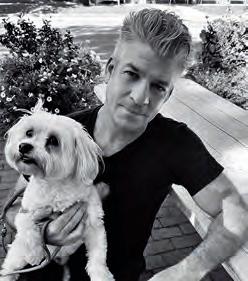
Ted Hildner (The Gurus, Mel Robbins, page 56) has a long career in real estate, but in recent years has followed his true passion: profiling his heroes. For this issue, he met with the self-help podcaster Mel Robbins, and spent time with novelist Amor Towles at his home in Gramercy Park. “I’ve read and loved all of Amor’s books,” he says. “Spending the afternoon with him was like having a drink with your friend who also happens to be a master storyteller.”
Ray Rogers (The Gurus, pages 58-63) is an editor who has worked at Interview, Billboard, and more. Currently, he is executive editor of The Purist, giving him unique insight on the wellness industry when interviewing gurus for this issue. “I’m constantly curious and always learning more about how we can all live healthier and happier lives,” he says. Bob Roth inspired him to return to meditating twice a day, while Dr. Neil Paulvin introduced him to the Calibre face mask, which measures exercise effectiveness. “This was previously the domain of elite athletes but is now available to anyone.”
EDITOR-IN-CHIEF
Peter Davis
CREATIVE DIRECTOR
Natalie D. Kaczinski
FASHION AND FEATURES EDITOR
Aria Darcella
DEPUTY PHOTOGRAPHY EDITOR
Mickey McCranor
EDITOR-AT-LARGE
George Hahn
FASHION EDITOR
Nolan Meader
PRODUCTION DIRECTOR
Jessica Lee
COPY CHIEF
Danielle Whalen
EDITORIAL ASSISTANT
Alex Fener
CONTRIBUTING WRITERS
Mike Albo, David Graver, Ted Hildner, Annabel Keenan, Ray Rogers, Constance C.R. White
CONTRIBUTING PHOTOGRAPHERS
Ben Cope, Sophie Elgort, Edd Horder, Bella Howard, Richard Kern, Jai Lennard, Nick Mele, Alexander Thompson
LEXINGTON AVENUE, 16TH FLOOR NEW YORK, NY 10022
PUBLISHER
Julie Dannenberg
Charles S. Cohen








1. Tribeca Grand
140 Franklin St. 7BR. 4.5 Bath. $17.5M. Web #22802358. Richard Orenstein 212-381-4248
2. Iconic Elegance at the Kenilworth 151 Central Park W. 3BR. 3 Bath. $12M. Web #22972953. Mike Lubin 917-371-6723
3. A Spectacular Oasis 432 Park Ave. 3BR. 4.5 Bath. $35M. Web #22810197. Anne Prosser 917-710-8686
4. Magnificently Renovated by Renowned Architect Peter Marino 4 East 66th. 5BR. 8 Bath. $34M. Web #22959001. Mary L. Fitzgibbons 917-653-6279 Martha Kramer 917-748-7422
5. Iconic West End Avenue
AD100 Designer Duplex
465 West End Ave. 5BR. 3.5 Bath. $6.5M. Web #22988907. Daniella G. Schlisser 212-906-9348
6. Five Bedroom Palace in the Sky 203 East 72nd St. 5BR. 5.5 Bath. $5.5M. Web #22972772. Lauren Cangiano 646-286-5900 Alisha Lloyd-Hudson 917-597-1511
7. Iconic Address, Park-Front Home 212 Fifth Ave. 3BR. 2.5 Bath. $10.995M. Web #22734199. Cordelia F. Robb 917-749-1866
8. Elegant 20’ Wide West Village Townhome 735 Washington St. 4BR. 5 Bath. $10M. Web #22399767. David E. Kornmeier 917-494-4302


s there anything more emblematic of a celebration than champagne? Golden, with festive bubbles, no drink says “party” more, whether it’s displayed in an enormous pyramid of coupe glasses, or merely passed around in flutes on trays. But lately, champagne is losing its luster.
In 2022, Avenue reported on the rise of alcoholfree spirit brands in both high-end restaurants and hotels, as well as in our homes. Recently, in the world of galas, balls, and glossy fashion functions, mocktails are the star of the show. Where once the only nonalcoholic options were sparkling water, soda, or, perhaps, a Shirley Temple, modern mocktails are now given the same level of consideration as cocktails.
“Over the past two years, having a mocktail is kind of industry standard, in the same way having gluten-free options became industry standard about five years ago,” says Max McCormack, whose clients include David Webb and the Museum of Arts and Design. For a recent event at Bergdorf Goodman, he celebrated a designer’s new rosethemed collection with drinks infused with the flower. “What we’re seeing more and more is that these mocktails or low-ABV drinks are as sophisticated as the rest of the menu.”
“It’s definitely ramped-up,” concurs Gabrielle Machinist, a caterer who has worked with fashion companies and PR firms, among other clients. “I bring it up as a point the way I ask, ‘Do you need coat check?’ To me, it’s definitely part of my list, because I don’t want people to think about it afterwards… I’ve seen how successful it is, as well.”
Oddly, this is one of the few areas in which the fashion industry is behind the times. In the world of weddings, crafting alcohol-free cocktails has been around forever. Marie Danielle Vil-Young, the founder and creative director of A Votre Service Events, has
long provided nonalcoholic drinks for guests to fulfill a variety of religious and cultural requests, and to make everyone feel included. But even she notes, there has been a noticeable difference between how her clients now gauge a good time, compared to their goals 15 years ago, when drinking as much as possible was the mark of a successful bash. “It’s not to say my clients don’t want to have a killer party and beautiful experience and great energy, but it’s taken on different meanings,” she explains. “What we deem as an amazing experience is almost a little bit redefined these days. There’s a focus on health and wellness, and it’s not so much on heavy drinking to have a good time.”
Mocktails, like cocktails, can range in complexity. Vil-Young says seasonal fruits with a twist, like jalapeño or habanero peppers, are popular. One of Machinist’s favorite combinations is basil and lime, and she suggests using rosemary sprigs as a garnish. There are also simpler options, like mixing flavored canned drinks with sparkling water. Savannah Engel of the PR firm Savi lists Ghia as one of her favorite nonalcoholic apéritifs. “[Mixers have] become so much better looking and they taste better than they used to,” she notes.
The easier drinks are for caterers to pre-batch, the easier they are to serve. That said, it might be too soon to say they’ll replace champagne. The biggest barrier is the visual perspective—there isn’t yet a signature mocktail that everyone recognizes as being alcohol-free.
“[One day] I would hope that there’s something as recognizable [as champagne] upon entry that carries the same message of ‘Welcome to the party as you’re in for a great night,’ without having alcohol in it,” says McCormack.–AriA DArcellA
“WHAT WE DEEM AS AN AMAZING EXPERIENCE IS ALMOST A LITTLE BIT REDEFINED THESE DAYS. THERE’S A FOCUS ON HEALTH AND WELLNESS, AND IT’S NOT SO MUCH ON HEAVY DRINKING TO HAVE A GOOD TIME.”
–Marie Danielle Vil-Young
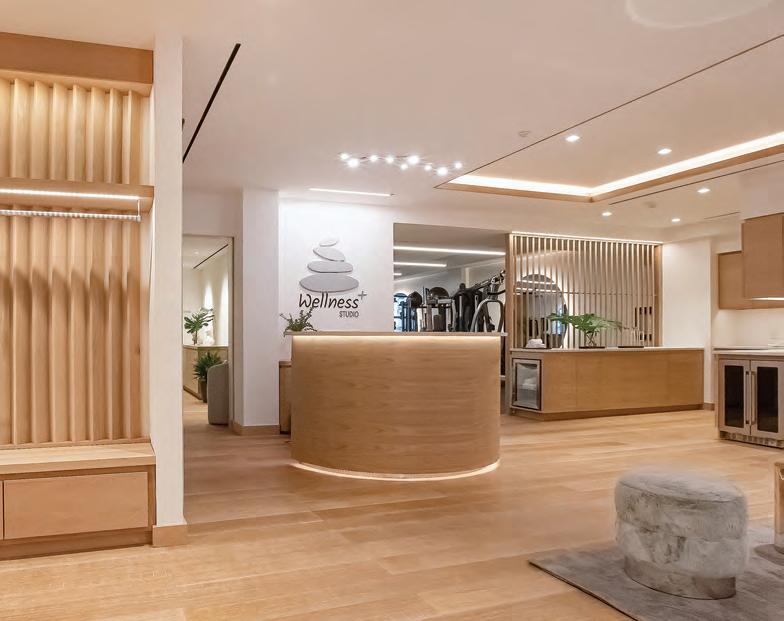
‘Ahhhh’
Although Wellness+ Studio has a gym and offers massage and facials, it would be inaccurate to frame it as a fitness center or even a spa. It’s much more.
When founder and owner
Eva Peña started planning the space in 2022, the idea entailed a lot more than just a place to workout and get a massage (though I did indulge in one during a recent visit). The certified personal trainer, fitness coach, and nutritionist wanted to provide comprehensive services and amenities for total physical wellness, officially opening the studio in early 2023.
Discreetly situated on the second floor of 980 Madison Avenue, directly across the street from the Carlyle hotel, Wellness+ Studio seems to immediately lower one’s blood pressure upon entering—I immediately felt more relaxed when I walked in.
The programs offered to clients are truly bespoke and custom-tailored to fit each person’s needs and goals. Starting with a complimentary body composition check and recovery sessions
with Peña herself, Wellness+ Studio offers expert individual personal training, yoga, Pilates, mobility, and stretch and recovery. The wellness programs expand into nutrition coaching; physical therapy; comprehensive medical consultation and assessment from Dr. Edward Goldberg; IV infusions; several types of massage; facial treatments; and more. Cosmetic treatments such as Botox, fillers, and lasers with a board-certified dermatologist are also in the works. This is the kind of place where I could spend an entire day.
In addition to the fitness room, which is accoutered with state-of-the-art equipment for various activities, the studio also has separate treatment rooms for the skincare and massage services, as well as an intimate space for posttreatment recovery and quiet.
On the day of my visit, I had the total pleasure of having a massage by a very friendly and skilled therapist named Nicole, whose work on my weary form put me into a state of calm and relaxation I hadn’t felt in years, reminding me that I really need to indulge in a massage more often. It was a fantastic experience.
Aesthetically speaking, Wellness+ Studio almost feels as if an Apple Store has expanded into exclusive health and wellness services, but with a decidedly warmer atmosphere. This very soothing space is a serene sanctuary in walls of soft white, complemented by floors and trim in blonde wood. Clean and cozy, but not cold. At front of house, there is the comfortable waiting lounge; a smart kitchen area with waters, house-made teas, and Nespresso coffees for clients to enjoy; and a small but handsome retail corner offering skincare products, candles, and some fitness apparel. Each of the treatment rooms have a chic wallpapered accent wall, which adds a nice flourish. Coming from a background in civil engineering, Peña designed the studio herself and contracted Remi Interiors and Ted Moudis Associates to bring her vision to life. There is even a subtle aroma permeating the space, and it’s very pleasant.
In a crowded wellness landscape, one facility can seem indiscernible from another. Peña has created something different here, something special. A word that comes to mind is “bespoke.” george hahn
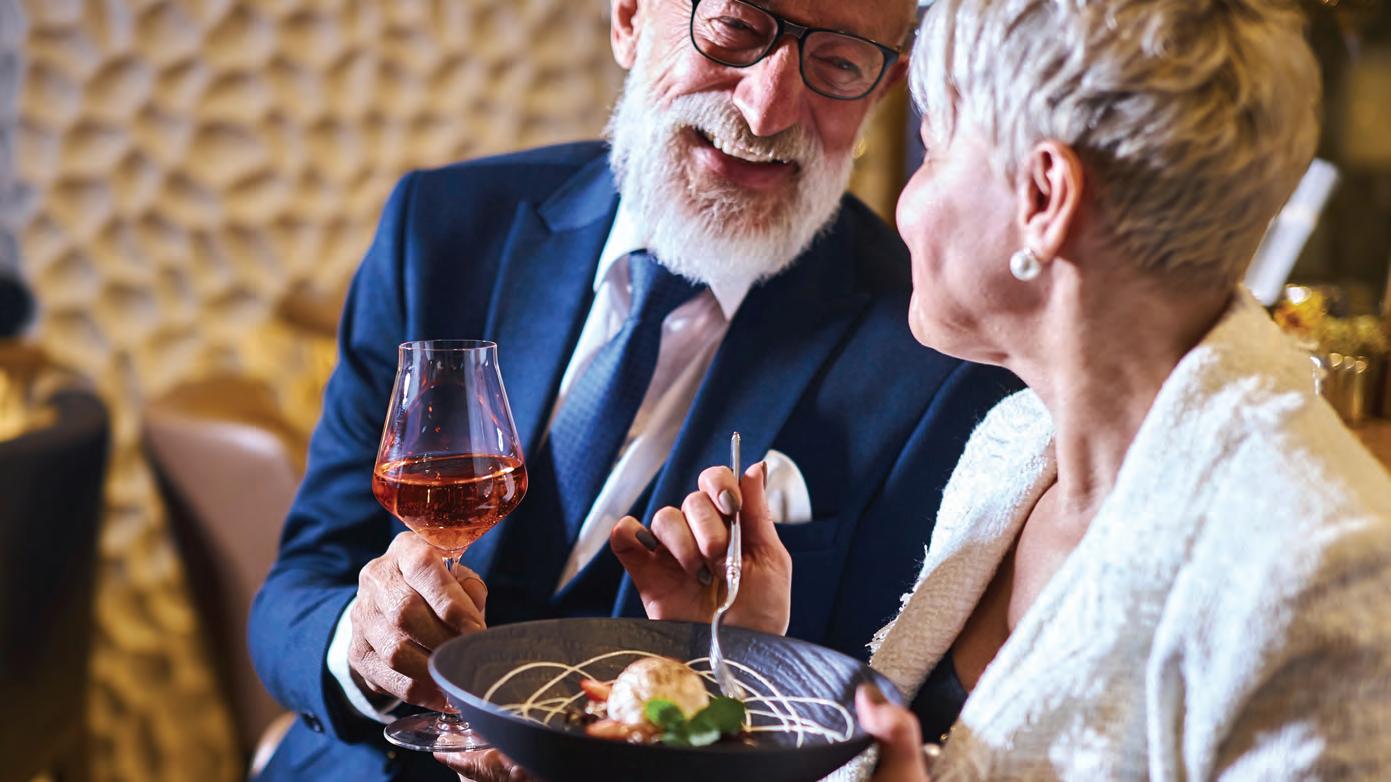


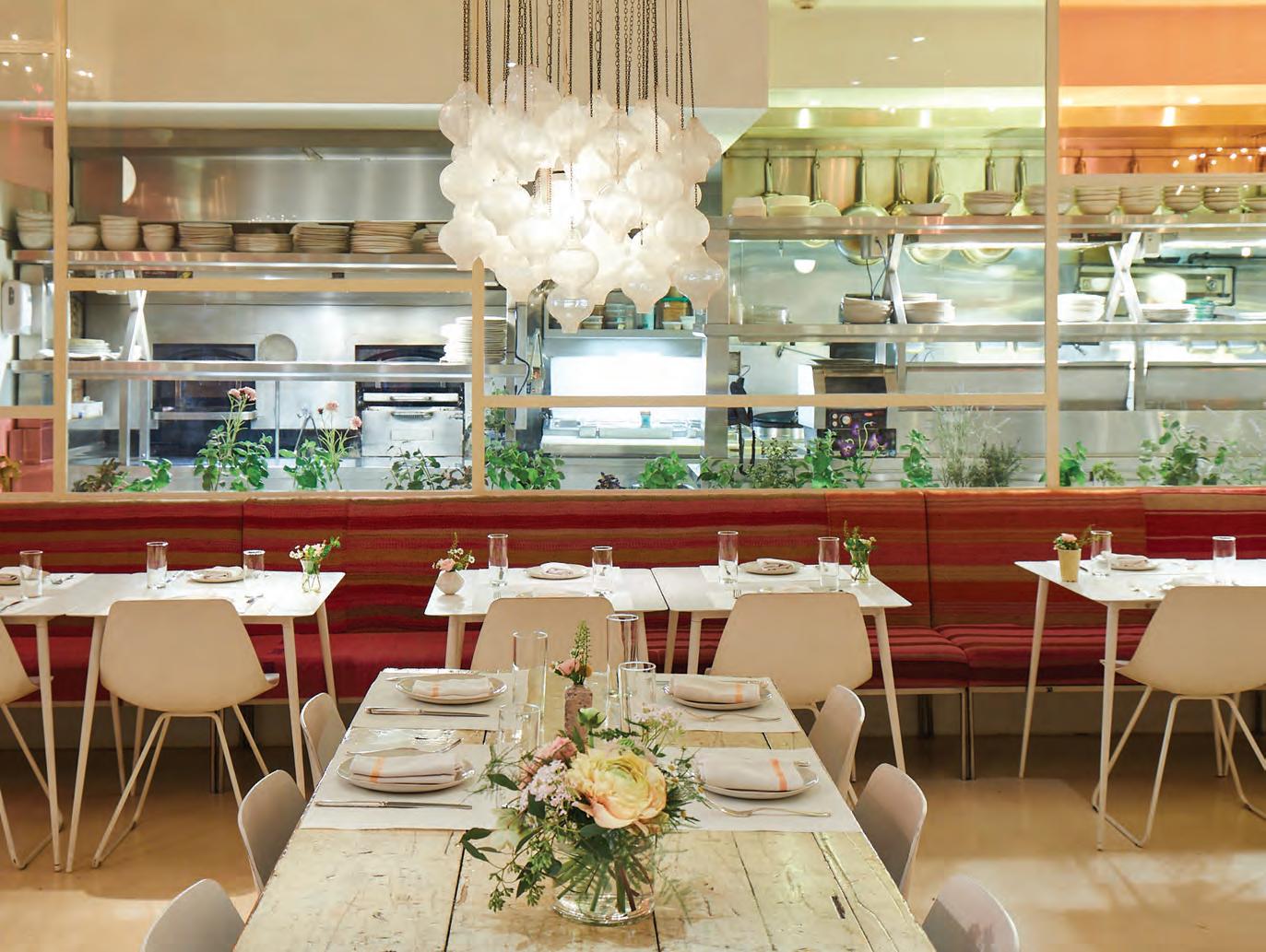

The concept of not eating meat was a fringy notion practiced by joyless, anemic-looking hippies with questionable hygiene. The prevailing attitude was: If there isn’t any meat, how could it possibly be considered a meal?
HEALTHY OBSESSIONS
Jean-Georges Vongerichten’s plant-forward dishes at abcV are as tasty as they are pretty.

Forget raw tofu—plant-based menus have gone haute cuisine. George Hahn unearths New York’s best eateries for a meat-free feast.
hen I was growing up, vegetarians got a bad rap. They were weird in the eyes of many, me included. The concept of not eating meat was a fringy notion practiced by joyless, anemic-looking hippies with questionable hygiene. The prevailing attitude was: If there isn’t any meat, how could it possibly be considered a meal? Nowadays, we know better. Evidence shows that introducing plant-based foods into our diet is good for us. Eliminating or merely cutting down on meat can lower cholesterol and fat, as well as reduce the risk of heart disease and some cancers.
Vegetarianism and veganism have emerged into the zeitgeist with increasing acceptance and popularity. Aided by documentaries like 2018’s eye-opening The Game Changers, which featured elite athletes and Arnold Schwarzenegger challenging what we have been taught about meat and protein, and the emergence of author/speaker and “blue zone” hunter Dan Buettner, whose social media channels and four-part Netflix series, Live
to 100, examines pockets of the globe consistently producing centenarians, people are getting hip to the perks of plant-based diets. Vegans and their eating habits aren’t so weird anymore.
Not that long ago, vegan and vegetarian options at a restaurant implied some kind of sacrifice or compromise in terms of a truly satisfying meal. The vegetarian offering on a menu might be a combo plate of vegetable side dishes or some sad, flavorless cauliflower-based entrée—a bone the chef would throw to those strange nonmeat eaters. This is not the case anymore. Ignoring vegan customers is not only off-trend, but, in 2024, it’s just bad business. It’s nice to see chefs at meat-heavy eateries creating more thoughtful and delicious dishes for those taking a break from meat. Recent lunches at Café Luxembourg, famed for their steak frites, had me delighted with a tasty purple sticky rice dish and a fantastic Beyond Luxemburger.
There are more vegan restaurants in New York than ever before. Chef Daniel Humm’s much lauded Eleven Madison Park is proof that one can enjoy a premium fine-dining experience without the dead

We shared a whole roasted cauliflower (a really good one), green spaghetti, mushroom walnut Bolognese, and grilled oakwood shiitake. We passed around bowls of coconut sticky rice and plates of crunchy lettuces. Everything was tasty—and not a single bacon cheeseburger in sight.
animals. Recently, I’ve enjoyed terrific meals at other plant-based eateries that proved incredibly satisfying.
abcV
Expanding his “plant-forward” cuisine at the original East 19th Street location inside ABC Home, Jean-Georges Vongerichten opened a sibling abcV last summer in the mammoth Tin Building food hall on Pier 17 (in the second-floor space, originally Seeds & Weeds).
Described as a “seasonally driven plant-based restaurant, offering creative and forward-thinking dishes, tonics, and cocktails,” abcV is a decidedly uncompromised plant-based experience in a casual yet elegant setting.
The menu is broken down into categories, be-
ginning with “for the table” (shareables), “fresh and vibrant” (cold starters), and “toasted and griddled” (warm appetizers). The entrées are “wok-seared, roasted, and grilled” and “warm and nourishing,” along with a short list of sides. At a dinner for a vegan birthday boy, a group of us tried several things on the menu: green chickpea hummus, crispy olive oil artichokes, avocado lettuce cups, and almond-flour pancakes, to start. Then we shared a whole roasted cauliflower (a really good one), green spaghetti, mushroom walnut Bolognese, and grilled oakwood shiitake. We passed around bowls of coconut sticky rice and plates of crunchy lettuces. Everything was tasty—and not a single bacon cheeseburger in sight. abcV at the Tin Building by Jean-Georges: 96 South Street (Pier 17), 646-868-6000, tinbuilding.com.
HOW RED IS MY GARDEN? A dish of lettuce and citrus at abcV.


Blossom
I do cook, but not as often as I probably should. Living what I call a hotel lifestyle, I prefer to order out, thinking of it as room service. (Though it would be so chic if my dinner was wheeled into my apartment by a uniformed room attendant.) A regular go-to is Blossom, a pioneer in refined vegan cuisine. Started in Chelsea in 2005 by Ronen Seri and Pamela Elizabeth, Blossom is now located on Columbus Avenue, conveniently around the corner from my Upper West Side apartment.
Blossom first pinged on my radar in the pre-Impossible burger days with their own plantbased Blossom Burger which knocked my socks off. It was a game-changing, off-ramp experience
for a decades-long beef-burger fanboy, and quickly became a regular weekend dinner feast.
To mix things up, I ordered Blossom’s tofu BLT on focaccia, wondering how in the hell they could do it without the “B.” It turns out that a tasty, crispy tempeh tofu “bacon” makes you forget that you’re not eating Babe. My other adventure on the Blossom menu is the meatball parm, crafted with house-made, plant-based “meatballs,” mozzarella, parmesan, and marinara on ciabatta bread. Incredible.
Other delights: the Cape Cod cakes, pumpkin ravioli, and the dependably comforting baked mac and cheese.
Blossom on Columbus: 507 Columbus Avenue (between West 84th and West 85th Streets), 212-875-2600, blossomnyc.com.



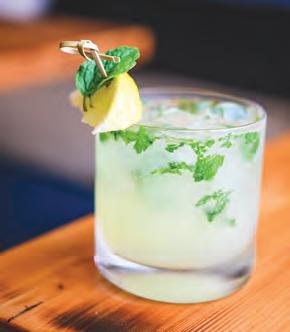
I was raised a carnivore. Almost every night for dinner was either beef, chicken, or pork. But I gave up it all up over 13 years ago, having my last cheeseburger on New Year’s Eve in 2010. I talk about plant-based eating often, and people invariably ask me if I’m a vegan. I describe myself as “vegan-adjacent,” still enjoying fish, cheeses, and ice cream when I’m out and about. (I draw the line at eating land animals.) And that could still evolve for me. Since I made this switch to my diet, I hardly feel like it’s a compromise. I’ve come to really appreciate and enjoy the fantastic and ever-expanding options in plant-based eating. I feel healthier. Except for being struck twice with Covid, I can’t recall being sick in the 13-plus years since I quit eating meat.

Over a decade ago, the food writer Mark Bittman published a book with the best diet title I’ve ever seen: VB6: Eat Vegan Before 6:00 to Lose Weight and Restore Your Health… for Good. The idea is to go vegan during the day, leaning into fruits, vegetables, whole grains, and legumes, then eat whatever you want after 6:00 PM. What a perfectly reasonable suggestion! Bittman’s not telling people to give up meat. In the interest of our greater health and wellness, he’s merely suggesting a workable adjustment.
Fortunately for anyone interested in the health benefits of such a shift, an ever-widening variety of delicious, satisfying options are more accessible than ever.
MEAT-FREE FARE

Rising from the most tranquil and expansive stretch of sand between Miami Beach’s coastline and Biscayne Bay, The Perigon is an unprecedented collaboration of three global design icons. The rare seclusion, matchless amenities, impeccable service, and culinary experience curated by Michelin-starred chef Shaun Hergatt promises residents and their guests an exclusive Miami Beach lifestyle.
An intimate collection of 73 expansive two- to fourbedroom oceanfront residences from $4.5M.
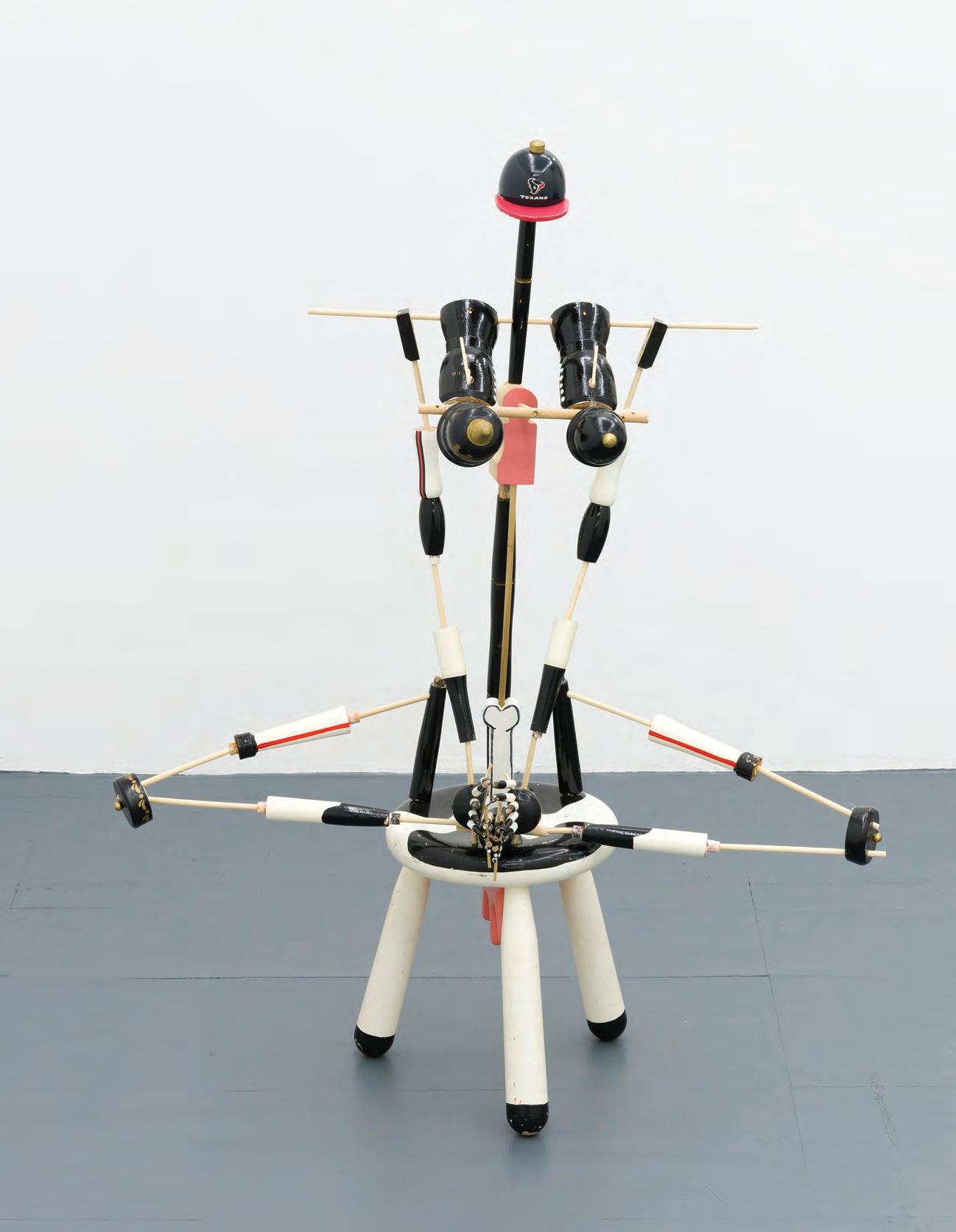 Yogini no. 12, 2022; wood, paint.
Yogini no. 12, 2022; wood, paint.

Artist Elizabeth Englander’s first solo museum show seeks Zen through the mundane. Annabel Keenan discovers Englander’s unusual sculptural take on spiritual body language.
I’ve always been drawn to the figure, and, in a funny way, nutcrackers are one of the few figurative items in the home,” Elizabeth Englander tells me. We’re discussing the Brooklyn-based artist’s first museum solo show at the Aldrich Contemporary Art Museum in Ridgefield, Connecticut. In the exhibition, “Eminem Buddhism, Volume 3,” nutcrackers take center stage. An unexpected material, they offered a way for Englander to incorporate wood into her sculptural practice.
“I knew I wanted to work with wood, but I didn’t have enough material,” she says. “Then, I found a nutcracker on the street in Red Hook.”
While having found a figure in the German toys, theirs is not the form Englander is interested in. Instead, she dismembers them, using the wooden pieces to create sculptures that draw inspiration from saints, gods, and goddesses of Jainism, Hinduism, and Buddhism and the intertwined sculptural traditions of these ancient belief systems. The exhibition’s title is a nod to this spiritual meaning and a playful reference to childhood stories Englander’s brother used to write. According to these tales, Buddha met the rapper Eminem and guided him through a spiritual conversion. Like the artist’s practice in general, the show is also a study of the figure and art history.

“There is something gruesome about taking nutcrackers apart, but it’s exactly how the figure was taught in art history.”
—Elizabeth Englander
“There is something gruesome about taking nutcrackers apart, but it’s exactly how the figure was taught in art history,” Englander says. “In Paris in the 19th century, art schools had a relationship with medical schools and there was a lot of dissection that went on. Sometimes, in order to understand something, we need to take it apart.”
Like many who grew up with nutcrackers in their homes, Englander’s family had several. Along with other found and purchased examples, these family nutcrackers made their way into the artist’s work combined with pieces of furniture and toys.
“Nutcrackers are a bit of an anomaly,” she explains. “They’re not quite toys, even if we play with them, because they don’t really do anything. They feel like folk art objects, but they’re massproduced. They’re kind of like family heirlooms and shrunken patriarchs, but they still have price tags from the Christmas Tree Shop on them. I’m interested in how the sentiment surrounding these objects accrues, whether that’s for me or for a complete stranger who owned the materials I use.”
Reconfiguring the nutcrackers, Englander gives them new meaning. They comprise the
abstracted bodies of sacred forms from the artist’s studies of statuary icons in Asian religious art. In each one, a figural form is visible, but in the place of limbs are objects like chair legs and spindles. They also feature the parts of nutcrackers, dissected and rearranged.
As a group, the sculptures relate to one another much like the dozens of icons housed in medieval yogini temples, each representing different facets of Shakti, the central goddess worshiped in Hinduism. The representations of Shakti are different ages and have different appearances and attributes. Englander’s Yogini no. 10, for example, is based on the deity Chamunda, a form of Shakti that is a demon slayer (a metaphor for the slaying of personal demons) and wears a skulled garland. In Englander’s sculpture, nearly 20 nutcracker heads drape like a rope down the front of the figure, which is adorned with two red hats from Santa nutcrackers. In this work, the nutcrackers take the place of Chamunda’s skulls.
“These works have shifted my perspective,” Englander says. “Dismemberment is violent, and in the past, I worked with it as a negative metaphor and constant in the history of Western sculpture. But it’s also an important motif in Indian art. In Buddhist and Tantric iconography, decapitation can signify liberation because you’ve cut off your delusions. Working on these pieces revealed the positive aspect of decapitation as a metaphor for liberation.”
Englander has been making these seated yogini figures for three years, drawing on poses from Asian religious art and practice. Yoginis are minor deities, but the term also refers to female yoga practitioners. “I’ve used the yogini structure as a way to explore iconographies of various deities along with meditation poses, building a kind of spiritual body language vocabulary-slash-repertoire,” she says. “Normally, I wouldn’t stay this long on a single form or theme. There’s a logic to the yoginis, where the more you can explain how the different iterations of Shakti pervade everything, the more you get a sense of Shakti, which is essentially energy.”
While exploring these forms in her work, Englander began going to a Zen center and practicing Zen Buddhism. “I was drawn to Buddhist practice through the art,” she says. “I was interested in working with bronze and I watched Mellon talks by a Columbia scholar named Vidya Dehejia, who was discussing the famous Chola Indian bronzes like those depicting dancing Shiva. I had been working from Christian art, but these talks ignited an incipient interest in Asian sacred art that I trace back to a 2011 visit to the Leshan Giant Buddha in China.”









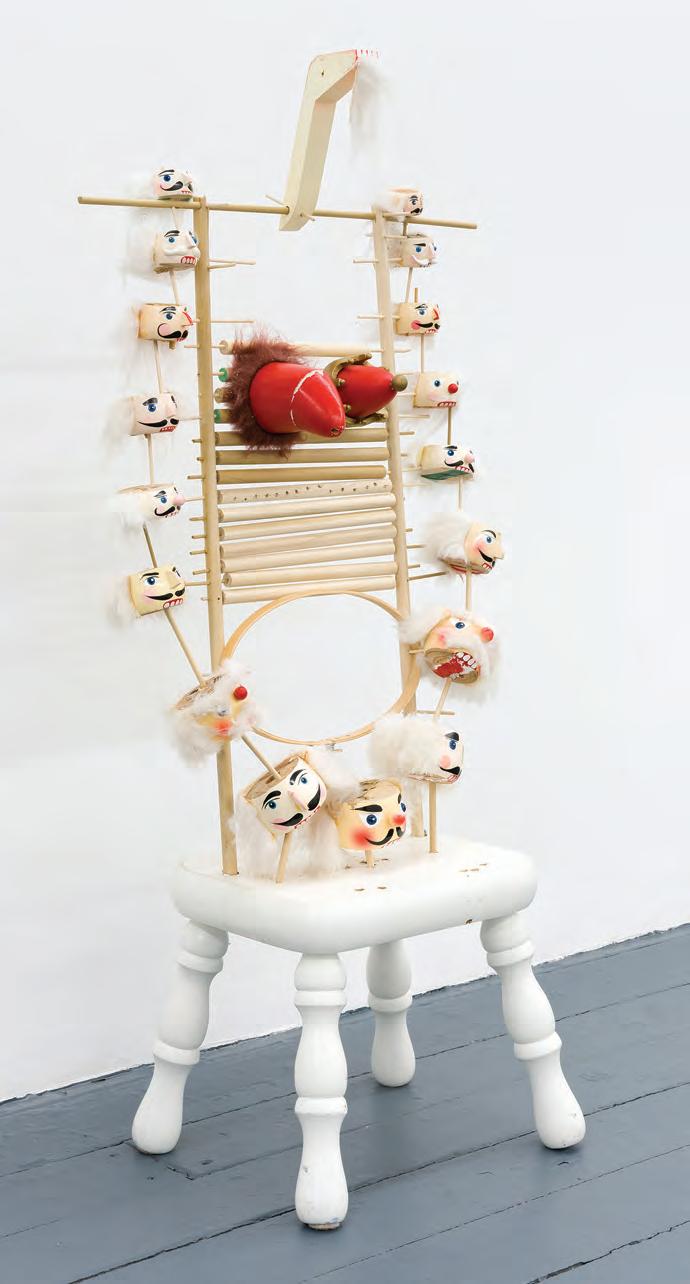
“In Buddhist and Tantric iconography, decapitation can signify liberation because you’ve cut off your delusions. Working on these pieces revealed the positive aspect of decapitation as a metaphor for liberation.”
—Elizabeth Englander
From Dehejia, Englander learned about Karaikkal Ammaiyar, a poet-saint who likely lived in the fifth century. Karaikkal Ammaiyar renounced her beauty to worship Shiva, playing music for her eternally. Depictions show Karaikkal Ammaiyar with an emaciated body, sometimes with fangs. The exhibition includes yoginis inspired by Karaikkal Ammaiyar, as well as Jinas and Bahubali. Jinas are the enlightened beings that spread Jainism and Bahubali is the heir of a dynastic war who is said to have meditated while standing for 12 years and renounced his power and possessions.
“It was a big transition from reading the art history of Buddhism to practicing it, but as I began to practice, I started posing the figures in more accurate and comfortable ways,” says Englander. “I sometimes think of the yoginis as ‘learning to sit’ at the same time as I have been learning to sit.”
As she established her practice, Englander began incorporating zazen meditation poses into her yogini sculptures. She recognizes that with a practice steeped in history and research, not all visitors will have connections to her references, and some will likely have deeper ones than she does.
“I try to give as much information as possible, because the religious and art histories I work with are really rich,” she says. “One thing I hope people leave with is a feeling of the possibility for transformation. That’s what this body of work has been for me. I’m not the best Buddhist, but I hope that sharing my spiritual journey might open up possibilities for others.”
“Eminem Buddism, Volume 3” runs April 7–October 27 at the Aldrich Contemporary Art Museum.
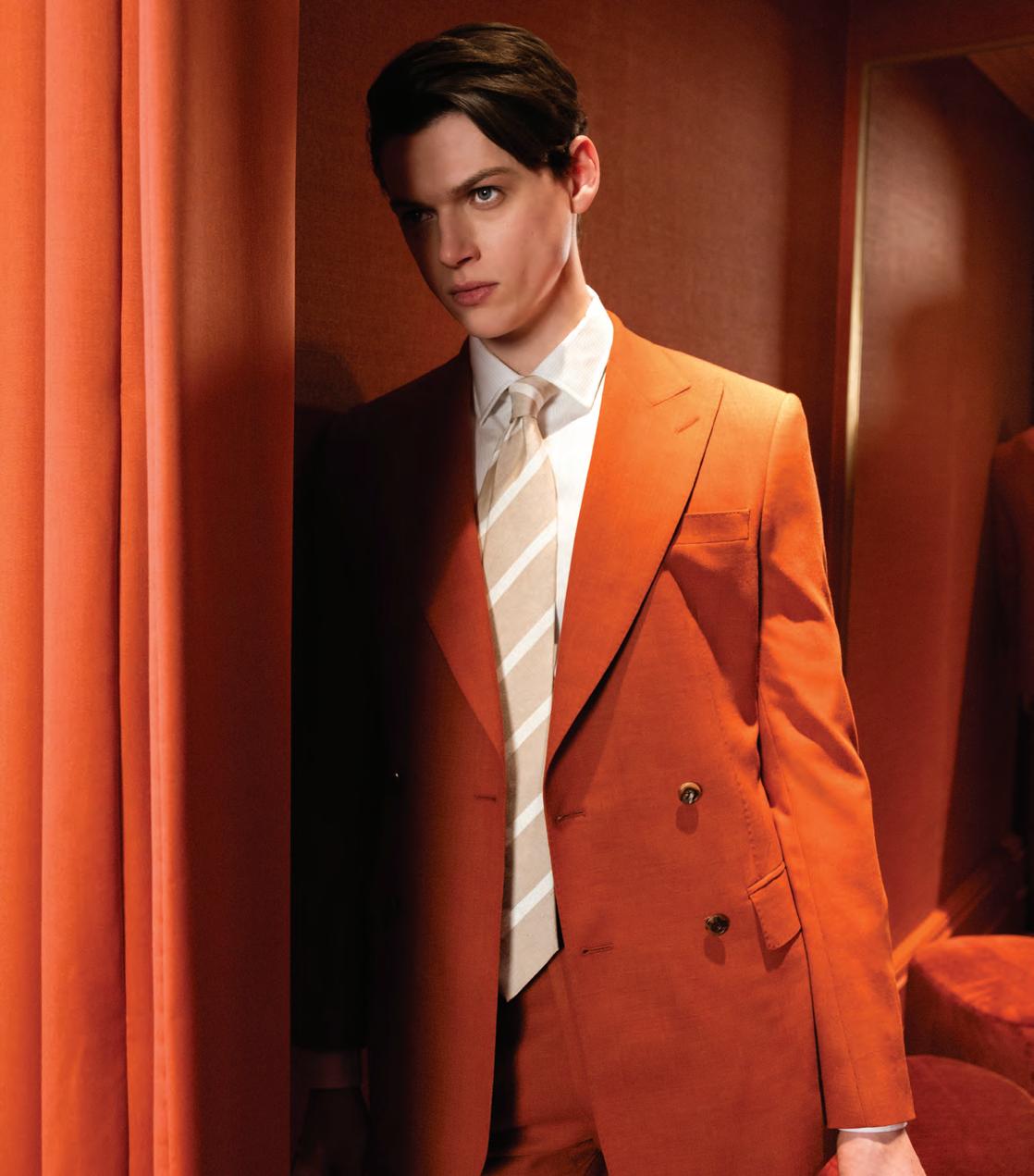

Art, food, and philanthropy intertwine out east.
BY ANNABEL KEENANWith spring in full bloom and beach season quickly approaching, the warmer weather is a perfect excuse to head to the Hamptons. There is a robust art scene out east, with many museums and galleries operating year-round. From an artist-founded center in a former church in Sag Harbor to a world-class gallery in East Hampton showcasing rising stars in contemporary art, here are four art venues to add to your next trip to the Hamptons.

 PARRISH ART MUSEUM
PARRISH ART MUSEUM
April 21–June 30
279 Montauk Highway, Water Mill
← Celebrating the overlapping culinary and artistic worlds, the aptly titled exhibition “The Art of Food” features sculptures, drawings, prints, and paintings related to food, its production, and dining. Featuring works from the extensive collection of philanthropist Jordan Schnitzer, the show includes iconic works such as John Baldessari’s playful and humorous prints of food emojis, Claes Oldenburg’s plaster cake sculpture, and Andy Warhol’s iconic screen-printed bananas. With nearly 40 artists in the show, the presentation offers a diverse perspective on food and consumption, from its role in connecting people and families to access to food and how we cultivate and shop for it. Co-organized by the Jordan Schnitzer Family Foundation, the exhibition, on view through June 30, is one of over 180 that the nonprofit has presented across the country, in addition to providing financial support and thousands of artwork loans to major shows. Intertwining art and food further, the exhibition will feature events in collaboration with the James Beard Foundation, a nod to the role of food in building communities and fostering local engagement. parrishart.org
May 18 - July 15
158 Main Street, East Hampton
→ Edward “Ted” Fawcett Carey was known for many things in his lifetime. As an artist, collector, author, and teacher, Carey was part of the lively New York art scene that emerged mid-century. He was also a close friend and studio assistant of Andy Warhol. Since his passing from AIDS in East Hampton in 1985, however, Carey has not been widely known in the canon of art history. A new show at the storied nonprofit Guild Hall seeks to correct this, celebrating Carey’s life and work and tracing the development of his paintings that documented his personal life and relationships while also addressing themes of queer culture. Running through July 15, the exhibition, “Ted Carey: Queer as Folk,” was organized by independent curator Matthew Nichols, PhD, and draws from Guild Hall’s permanent collection, marking the first time many of the works have been on view since the artist’s memorial exhibition in 1985. guildhall.org


March 10 - June 23
48 Madison Street, Sag Harbor
← Housed in a former Methodist church built in 1835, the arts center known as the Church has quickly become a beloved staple in Sag Harbor since its founding in 2021. Indeed, community and creativity are in its DNA. Founded by artists Eric Fischl and April Gornik, the sprawling, renovated space welcomes thousands of guests annually to its exhibitions, programs, and events. This spring, the Church presents “Space - Sight - Line,” a group show exploring how artists use visual perception in their work, playing with techniques, light, and space to surprise, delight, and give pause to the viewer. Organized by the nonprofit’s chief curator, Sara Cochran, the show features artists such as Uta Barth, Walead Beshty, Tara Donovan, Sol LeWitt, and Keith Sonnier. The show also includes a site-specific work by Christine Sciulli inspired by water. Located in the building’s rafters, the piece interacts with the historic architecture, weaving and dipping through space like a three-dimensional drawing. Now through May 26, the exhibition will be followed by a group show, “Are You Joking? Women & Humor,” which opens June 23 and explores the intersection of art and humor in the work of contemporary women artists. thechurchsagharbor.org

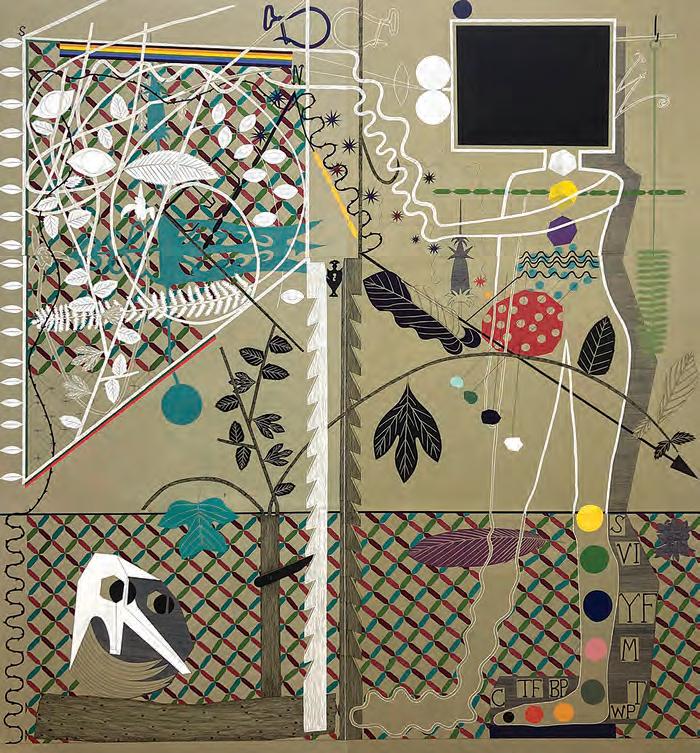

HALSEY MCKAY GALLERY
May 19 - June 23
79A Newton Lane, East Hampton
← Anchoring the East Hampton contemporary art scene since 2011, Halsey McKay Gallery is known for its eclectic exhibitions showcasing emerging and mid-career artists from around the world. For its spring program, the gallery is staging solo shows by Scottish abstract artist Steven Cox and multidisciplinary artist Sabra Moon Elliot, both on view through May 19. For his show, Cox is creating new, vibrant paintings using an innovative transfer technique that results in textured, visually dynamic compositions with striated bands of luminescent colors. Concurrent to Cox’s show is a solo presentation highlighting Elliot’s multifaceted, intuitive practice that spans sculpture, painting, ceramics, and installations and explores the relationships between color, structure, and forms, as well as social and cultural phenomena. Following these presentations, Halsey McKay Gallery will open solo shows of textile artist Miranda Fengyuan Zhang and multidisciplinary artist Shaun O’Dell, on view from May 25 to June 23. Creating captivating weavings, Zhang explores the pictorial field itself, embracing the pixelation of warp and weft in works that blend abstraction and representation. Reminiscent of imagery from the natural world, including mountains, rivers, and gardens, Zhang’s compositions are both familiar and distant, offering hints of fleeting information. These will be displayed alongside works by O’Dell that continue his interest in understanding his family’s colonial settler history and how this legacy can inform contemporary issues, including climate change and displacement. halseymckay.com
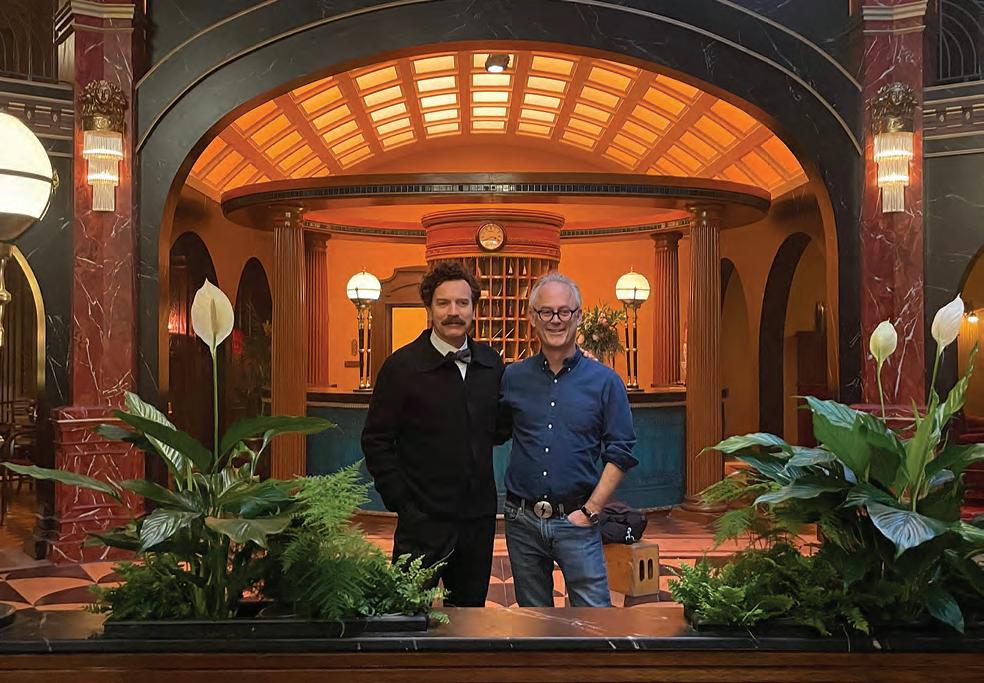
Writer Amor Towles is a New York treasure. As his new book, Table for Two, hits shelves, Towles invites Ted Hildner to his Gramercy Park home to discuss the art of storytelling
ince the debut of his first novel, Rules of Civility, which was hailed as one of the best books of 2011 by the Wall Street Journal, Amor Towles has swiftly become one of America’s favorite storytellers. After two decades on Wall Street, the banker turned best-selling author has emerged as a modern literary giant. Earlier this month, after already publishing three acclaimed novels, selling over six million copies, and having his second book, A Gentleman in Moscow, become an eight-part Showtime series starring Ewan McGregor (that he is also an executive producer on), Towles is enjoying the early success of his newest book, Table for Two, which many say is his best work yet—with the New York Times simply calling it “a winner.”
Table for Two is a page-turning collection of six short stories that take place in turn-of-thecentury New York, as well as a noir novella. “Eve in Hollywood,” the novella, is set in Los Angeles and follows Eve Ross, a main character from Rules of Civility who disappears from New York and ends up in Los Angeles in a mysterious web of lost souls, blackmail, and thugs. The half dozen other short stories offer windows into the lives of various
His second novel, A Gentleman in Moscow, published in 2016, spent two years on the New York Times bestseller list, while his third book, The Lincoln Highway, shot all the way up to number one.

characters, from the opportunistic Russian peasant who manipulates the surplus lines and creates capitalistic prosperity, to the unassuming elderly patron at Carnegie Hall who bootlegs concerts. Towles introduces us to an aspiring writer who spends more time forging art than creating fiction. The most unnerving is the nightmare tale of two airline passengers who, when grounded, share a hotel room. After one passenger’s drinking problem becomes larger than his carry-on baggage, all hell breaks loose.
In Rules of Civility, which landed Towles on the bestseller list, he presented us with Eve Ross’s best friend, 25-year-old Katey Kontent, an ambitious young secretary from Brooklyn desperate to carve out a better life while climbing the treacherous corporate and social ladders in Depression-era Manhattan. After meeting a handsome banker named Tinker Grey, Katey, the novel’s narrator, gains access to the hallowed halls of Condé Nast and the smoke-filled, gin-soaked private parlors of the upper crust. Katey leaves a wake of chaos and destruction as she blazes through high society, but, despite her foibles and flaws, Towles renders her so lovingly and so human that it’s impossible not to love her.
Following the success of Rules of Civility, his second novel, 2016’s A Gentleman in Moscow, spent two years on the New York Times bestseller list, while The Lincoln Highway shot up to number one. Towles has been fascinated by Russian culture for decades and A Gentleman in Moscow is the oft-ironic tale of Count Alexander Ilyich Rostov, a Russian aristocrat held hostage inside the luxurious Metropol hotel in the early days of the Bolshevik Revolution. Over the next 30 years, as his freedom and the Russia he once loved vanishes, we follow the Count on an endearing, historical, and personal journey. Speeding ahead, The Lincoln Highway drives readers in a completely different direction. Full of thieves, misfits, and outrageous situations, The Lincoln Highway is a 10-day road trip, set in 1954, from Nebraska to the Adirondack Mountains, mapped with wrong turns and run-ins with hobos, nuns, and punch-throwing bullies.
I sat down with New York’s hometown literary hero in the garden of his Gramercy Park town house on the morning it was announced that Warner Bros. had picked up The Lincoln Highway to become a feature film written and directed by Christopher Storer, the creator of the multi-awardwinning series The Bear. A laid-back, affable Towles met me at the front door with a wide smile. In his sporty, middle-aged preppy look, horned-rimmed glasses perched on his nose, Towles welcomed me in, offered me something to drink, and walked me through his impressive four-story home. It felt as though I was stopping by an old friend’s place for a cocktail rather than a formal interview. Huddled at the table where his family eats—and many of his characters were created—Towles was eager to discuss his unique writing process and reveal a few stories behind the man who pens the stories the world can’t seem to get enough of.
O magazine praised Towles’ first novel as “an irresistible and astonishingly assured debut,” but his seemingly overnight success resulted from years of hard work and a lifetime passion for

learning. When did Towles first know he wanted to write? Without hesitation, he says, “I got interested in writing fiction, really, when I began reading. I was in first grade, and my teacher in Dedham, Massachusetts, invited a poet with some reputation in the Boston area to come in and read to our class.” The poet was Harvard’s award-winning David McCord. “He read poetry targeted at young people. I loved everything about it. I liked the effect the poems had on all of us in the group.”
That night, first-grader Towles went home with his signed copy of McCord’s tome and began his writing career by crafting poems on ice cream and other subjects a young kid found highly important. Throughout high school and college, Towles continued to write fiction. Two encounters at Yale during his undergraduate years changed the course of his life. He met Peter Matthiessen and Walter Abish, two completely different types of writers. Towles says they “taught me how to begin to see the many other elements of craft that are involved in constructing a novel and the importance of learning other things from other people. Probably the most important mentor in my writing life was the great Peter Matthiessen, who was both a novelist and a naturalist and an essayist and founded The Paris Review with George Plimpton in the ’50s.” Matthiessen, who taught a writing seminar that you had to apply to get into, accepted Towles and, after just a matter of weeks, approached the student
and told him he saw greatness in his abilities and that if he were serious about becoming a writer, he would help him achieve his dream. Towles will never forget this pivotal moment, the first time someone he truly respected believed in him, giving him the confidence to thus believe in himself—something he says every artist needs, but few get.
It was also at Yale that, during a writing seminar his sophomore year, he met visiting professor Walter Abish. “Abish lived in the Village and was a real hardcore experimentalist. Born in Austria [just before] the Second World War, he had an eye patch and was really a wild guy. I’m not kidding about that. He made a big impact on me.” Abish compiled a list of 100 books he believed everyone interested in becoming a writer should read. “That list became an obsession for me. I would go to used bookstores wherever I was with the list, and I’d hunt. Some of it was mainstream, but a lot of the stuff wasn’t in print anymore. Slowly, I found all the books and would stack them up.” Towles headed to his family’s house in Martha’s Vineyard that summer and began reading, sometimes a book a day, until he finished the list.
After Yale, Towles attended Stanford University, where, upon graduating in 1989, his senior thesis, The Temptations of the Pleasure, a collection of short stories, was published in The Paris Review. With a master’s in English, he moved to New York and tried his hand at becoming a professional writer but was pulled away by the prospect of a lucrative career on Wall Street. He helped build Select Equity Group into a firm that now manages over $35 billion in assets. But while he excelled in finance, he never lost his dream about being a writer. In what little spare time he had, Towles crafted stories and, after numerous attempts at a manuscript, he sold his first novel, Rules of Civility, in 2011.
Towles ditched the pressure cooker of Wall Street two years later and has been writing full time ever since. Although he loves working from home, becoming the man that millions of admiring readers have come to love isn’t easy. His standards are sky-high, and his books are complex puzzles filled with depth, detail, and historical accuracy. He follows an arduously strict process with every project. “It takes me a long time to write a book. I can spend years creating the outline, detailing the characters, plots, and settings. I do this for each chapter until I get to the end, and I don’t begin to really write until I’m satisfied. I’ll ultimately try to imagine everything that will happen in the book well in advance. After I write my first draft, I usually revise it three times from beginning to end.”
When queried about what’s next, Towles happily reports he’s currently working on a new novel. “It’ll take me a couple of years to do, but it starts in Cairo after the Second World War and ends in New York City in 1999. I’m well into it, but not even halfway through.” We can already hear Hollywood ready to start a bidding war before the book is even finished.

KIDNAPPED THE ABDUCTION OF EDGARDO MORTARA
A FILM BY MARCO BELLOCCHIO
COHEN MEDIA GROUP PRESENTS ONLY IN THEATERS MAY 24 QUAD CINEMA AND OPENS AT
ACTOR JAMES NORTON ’S CAREER IS SWIFTLY ON THE RISE, FROM PLAYING CHRIS BLACKWELL IN THE BOB MARLEY BIOPIC ONE LOVE TO HIS DEEPLY FELT ROLE IN THE CRITICALLY ACCLAIMED NOWHERE SPECIAL . DAVID GRAVER CATCHES THE BRITISH THESPIAN IN BETWEEN TAKES.



Inthe nearly four years between its September 2020 premiere as an official selection of the Venice Film Festival and its April 2024 theatrical release in the United States, the quietly emotional cinematic masterpiece Nowhere Special has continued to garner attention for the performance of its star, James Norton. During that time, Norton himself has undergone an atmospheric rise—affixed to the fiery conclusion of his character, Tommy Lee Royce, in the beloved British crime series Happy Valley, to his raw performance as the tormented Jude St. Francis in the West End stage adaptation of Hanya Yanagihara’s acclaimed novel A Little Life.
Both roles demonstrate Norton’s intuitive capabilities in bringing a character to life. Happy Valley, which ran for three seasons stretched out over 10 years (debuting in 2014, with a second season in 2016 and a third in 2023), marked a turning point. “It’s such a huge part of my life and my career,” Norton tells Avenue. “When you add in this eccentric, confident choice to delay the third season so that the whole experience spans 10 years,” he continues, “we all began to realize how significant the series was. In that seven-year gap, I grew up. We all did. Our lives changed. We had the opportunity to come back and apply those changes to the characters and see how they evolved.”
Norton credits his portrayal of the character with breaking him out of typecasting. “I got that role when people did not know who I was or how I sounded. It proved I was up for and capable of transformative roles. I owe it to Sally Wainwright and the team. People can refer to it and see that I will put in the work,” he says. “I learned, by playing that role, the depths that I could go to and the way to approach character relationships. The whole show is about family and blood and the deep ways we all relate as human beings.”
A Little Life also provided a turning point— one where Norton mined his past to inform a character defined by immense trauma. “It felt like an insurmountable challenge,” he says. “It was the hardest thing I’ve ever taken on, in terms of creating the life of a character, and I did it with a great support group.” The run time of each performance was roughly four hours—and the physical and emotional demands were extreme.
Though the subject matter of Nowhere Special, which is inspired by the true story of a single father in Northern Ireland preparing his son for an adoptive family following his own death, carries gravity and complexity, Norton’s performance is reserved and transfixing. The film—written, directed, and produced by Uberto Pasolini—is populated by quiet, and quietly moving, moments between Norton’s character, John, and his fouryear-old son, Michael, who is played with curiosity and wonder by newcomer Daniel Lamont. “I was looking for someone who could embrace the language of the film, where thoughts and emotion are rarely articulated and never emphasized, but still need to be communicated, and someone generous enough to adapt to the unpredictable needs of a four-year-old performer without any
“Every actor loves to show what they can do in terms of a big acrobatic, emotional dance, but I didn’t do that. I had to trust that my eyes could tell the story.”
–JAMES NORTON
previous experience (as I didn’t want a ‘child actor’ for our Michael),” says Pasolini. “The film really could not have happened without him. He understood that our story would only work if we believed in the boy and his relationship with the father, and it is his limitless generosity towards Daniel that enabled that relationship to be truthful on the set and on the screen. His readiness to spend time with Daniel and his family ahead of and during the shoot gave birth to a real friendship, real affection between them, and I was just lucky to capture it with our camera.”
“I knew it would be a challenge to have a dialogue with a four-year-old who hadn’t yet confronted death and didn’t really know what death was,” Norton says. “This is the story of a man preparing his child for his death both in a practical sense— by finding the best foster family, and the best future—but also in an emotional sense, as he introduces him to the ideas of separation and loss and grief.” Norton’s bond with Lamont is evident—and their process began simply by talking to one another, playing with toys, and hanging out.
As Norton gently introduced the themes and concepts of the film to Lamont, Pasolini began to roll. “I could see this open, innocent face looking at me and he was computing what I was telling him,” Norton continues. “We thought we were going to shoot this in piecemeal chunks and cut it up and grab a line here and a line there, but the truth
is Daniel went through something and I went through something. The director was able to let the camera roll and we’d have a long two-shot and he’d just capture everything. Magic happened.”
For the role, Norton—who was born in London— adeptly adopted a Northern Irish accent. His other transformations were subtler. There’s an expressive minimalism to the performance that allows the viewer to dip into pools of immense grief. “Every actor loves to show what they can do in terms of a big acrobatic, emotional dance, but I didn’t do that,” he says. “For me, it was a challenge, as is always the case with good writing, to trust what it takes to tell the story. This is about a depressed man who is not used to showing his emotions. I had to trust that my eyes could tell the story.”
Norton believes that the heaviness of the subject matter should not deter people from watching it, because it’s really a story of love, and the evolution of a father who wants nothing more than the best future for his son. “A film can give you so many things, but if it encourages you to hug someone a little tighter and love a little deeper, that is the perfect reason to immerse yourself in a movie,” he says.
“I am so proud of this film,” he adds. “If a job has successfully contributed to the growing and learning process, as an actor and as a person, that job is a great privilege. Nowhere Special was such an important moment in my life because it was an



opportunity to meditate on something that I am afraid of—dying, death—and leaving someone behind. And from it, I found love, kindness, and compassion.”
In addition to the cinematic release of Nowhere Special, Norton also featured in this year’s Bob Marley biopic, One Love, where he played the producer Chris Blackwell, who first took a risk on the Jamaican recording artist. Norton spoke to Avenue from his home in London, which he had just returned to from Iceland, where he was shooting the television series King and Conqueror. The show was developed by his own production company, Rabbit Track Pictures. “I have been lucky that every job has built my career in an organic way,” Norton says. “It’s been a ladder of a career—and I’ve been excited to spend time on every rung. I started in theater and then did small roles in television, before Happy Valley. I did it all quietly and had time to make mistakes. Now that people are paying attention, I feel more confident.” With such disparate, compelling performances, that confidence has been earned.
“A film can give you so many things, but if it encourages you to hug someone a little tighter and love a little deeper, that is the perfect reason to immerse yourself in a movie.”
–JAMES NORTON
WELLNESS ISN’T JUST A STATE OF BEING, IT’S AN INDUSTRY. BUT FOR ALL THE GIZMOS AND QUICK-FIX PROGRAMS ON THE MARKET, ARE WE REALLY BETTER OFF? AFTER SOME HEALTH TROUBLES, GEORGE HAHN LEARNED TO CUT THROUGH THE NOISE AND GET BACK TO BASICS.
I WOULD LOVE TO SEE A CHART WITH DEFINITIVE DATA COMPARING WHAT PEOPLE EXPENDED ON WELLNESS WITH THEIR OVERALL HAPPINESS AND WELL-BEING TODAY. WHAT WAS THE ROI? WAS IT TIME AND MONEY WELL SPENT? DID ANY OF IT WORK?
We all want to be better— be that how we look, feel, act, work, or live.
Smart entrepreneurs saw the open lane on this highway and designed, packaged, and sold ideas, products, and programs for this unyielding quest for “better” in all its forms. This now-crowded road to being thinner, fitter, hotter, younger, richer, more successful, more productive, and happier is the multi-billion-dollar industry dedicated to “wellness.”
If we all felt confident and good about ourselves, there would be no wellness industry. But, alas, our evergreen dissatisfaction with who we are, where we are, how we feel, and what we look like can never be underestimated. In fact, one could argue that the unicorns among us who have healthy self-esteem can, by contrast, seem a little full of themselves, intimidating, or even suspicious.
I would love to see a chart with definitive data comparing what people expended on wellness
with their overall happiness and well-being today. Consider all the time and money spent on the books, podcasts, videos, classes, serums, sessions, oils, supplements, psychedelics, retreats, crystals, and candles. What was the ROI? Was it time and money well spent? Did any of it work?
People have long sought easier solutions to the elements of the human condition that cause us dis-ease. The idea of paying money for a product or service that promises or proposes relief or fulfillment is extremely appealing. And if we can do this quickly and with minimal effort? Fabulous. We go to impressive lengths to fast-track the results of time-tested processes that we’d just rather not do or deal with. And we want it now—at least I do. It brings to mind one of Carrie Fisher’s most inspired lines of dialogue in Postcards from the Edge: “Immediate gratification takes too long.”
In late 2021, I started to experience what I now know were symptoms of long Covid. They came in the form of panic attacks, heart palpitations, shortness of breath, and random bouts of anxious nervousness that left me dizzy. I was terrified that I was experiencing the same cardiovascular
breakdown that killed my father when he was my age, and I thought I was going to die. But EKGs, stress tests, blood work, and all manner of physical exams showed that I was fine. When I shared the timeline of my experiences with a doctor at Mount Sinai’s Center for Post-Covid Care, she just nodded as if she’d heard my story a hundred times before, telling me they were seeing this all over the place with patients who’d had Covid. She also told me there was nothing to do but just ride it out.
Very frightened and desperate, I was willing to go to just about any length to feel better. I tried cold-water immersion, deep breathing, therapy, antidepressants, beta-blockers, very low-impact exercise (any exertion gave me heart palpitations), mindful meditation, and a lot of crying. It was a long haul. Then, one day, the clouds started to break, giving way to a little sunlight, and I started to feel… better. It took nearly a year.
Long Covid wasn’t my first frightening challenge with my own personal wellness. Over two decades ago, I got sober. It was hard. A few years ago, I quit smoking. That was really hard. Both were addictions that put my health in jeopardy and my life in danger, and the recovery from each entailed a lot of work. If there were a pill I could have taken, I would have taken it. But there’s no such pill. And even if there were, it would just be a Band-Aid that ignored the real issues for which the drinking and smoking were merely symptoms. If my own experience is to be trusted, it seems there are no shortcuts to meaningful and necessary changes for my own wellness.
Resolutions are tricky. We’ve all heard the anecdotes about the annual spike in gym attendance after the holidays, soon followed by the reciprocal drop. This past January, a friend who struggles with food and alcohol told me he was starting the new year by quitting drinking, hitting the gym, and going vegan. Within a month, he was back to his old habits. Setting the bar too high with unreasonable expectations can really kick us in the ass.
This is not to discount the value of legitimate wellness services where and when they are needed. Life is full of pain, whether from physical ailment, emotional trauma, or grief from loss—it’s part of the human experience. The expert care of wellness professionals can make a profound difference in our recovery, comfort, and well-being, enabling us to get on with our lives more effectively.
Ultimately, my takeaway from my own pursuit of wellness was that the fix was, for the most part, an inside job. The healing didn’t come from exotic treatments, exclusive retreats, or expensive gurus. Much of it seemed nearly identical to what I learned as a kid: eat right, exercise, get plenty of sleep, relax, breathe, be still, don’t take life (or yourself) too seriously, take time out for yourself, stay connected, spend time with family and friends, and help others. It’s not always easy, but it’s not very complicated, either. And while it doesn’t fix everything, it sure fixes a lot.
I WAS WILLING TO GO TO JUST ABOUT ANY LENGTH TO FEEL BETTER. I TRIED COLD-WATER IMMERSION, DEEP BREATHING, THERAPY, ANTIDEPRESSANTS, BETA-BLOCKERS, VERY LOWIMPACT EXERCISE, MINDFUL MEDITATION, AND A LOT OF CRYING. IT WAS A LONG HAUL.

FOR MANY SENIORS, NEW YORK IS ALREADY THE BEST PLACE IN THE WORLD TO RETIRE. STILL, INSPĪR CARNEGIE HILL IS TRYING TO SWEETEN THE DEAL. HILARY SHEPHERD TOURS THE LUXURY SENIOR LIVING FACILITY THAT’S MAKING ITS MARK ON THE CITY’S SKYLINE— AND ITS RESIDENTS.

Nestled within the heart of Manhattan’s lively, picturesque Upper East Side neighborhood and situated a mere stone’s throw from some of the city’s top cultural institutions, historical landmarks, and medical facilities lies Inspīr Carnegie Hill.
For passersby, the 23-story architectural wonder, which was completed a little over three years ago, may seem like just another upscale hotel or apartment complex, what with its floor-to-ceiling windows (ideal for sweeping views of the East River and city skyline); well-manicured balconies; and sleek, concrete exterior. Inside, a farm-totable restaurant, heated saltwater pool, Calacatta gold marble accents, and a wraparound terrace garden feel apt for, say, an exclusive spa or private wellness center targeted toward chronically stressed New Yorkers.
But Inspīr, located at 1802 Second Avenue on 93rd Street, is not an upscale hotel or apartment complex, nor is it an exclusive spa or wellness center (though it is upscale and does contain a top-notch spa and wellness menu). Instead, Inspīr is a senior living facility—one that’s redefining how we collectively think of “elder care.”
Folks who inhabit the 215 private residences— which are made up of studios, one-bedrooms, two-bedrooms, and a few select penthouses— mostly come from the “Silent Generation,” or the generation marked by people born between 1928 and 1945, explains Brian Geyser, APRN-BC, MSN, the vice president of health and wellness at Inspīr. Baby boomers—those born between 1946 and 1964—are beginning to trickle in as well. For both generations, says Geyser, comfort, security, and peace are paramount to their living
environments, but there is an increasing desire for access to wellness offerings, technology, recreational and cultural activities, and luxury features.
To satiate the wants and needs of the aging population, Inspīr has adopted a progressive and wellness-minded philosophy when it comes to senior care, inspired heavily by lifestyle principles from “blue zones” to encourage mental and physical vitality. Places like Okinawa, Japan; Sardinia, Italy; and Nicoya, Costa Rica, are considered blue zones as their environments foster connection, purpose, plant-rich foods, natural movement, and access to nature.
Looking to the blue zone principles was essential in curating Inspīr’s menu of amenities and helping residents lead “longer, healthier, happier lives,” says Geyser. But because blue zones aren’t associated with urban settings like New York City, weaving in such a philosophy wasn’t without its challenges.
“We took [principles] like engagement [into consideration], meaning, keeping people actively engaged in life and in the city. Getting them out of the building and into the city, or bringing the city into the residence. These things also give them a sense of purpose—a purpose for living,” he says. Nature was another tricky principle to incorporate, though thanks to biophilic design concepts, plenty of natural light, and accessible gardens and outdoor spaces, Inspīr was, in fact, able to become what Geyser calls “a place filled with nature.”
Inspīr’s approach is broken up into nine key elements: engagement; purpose; movement and mobility; art and music; belonging; family; brain health; nature; and laughter. This means that, on any given day, residents might witness a fun drag queen performance or be serenaded by actual Broadway sensations. They might attend a yoga or a strength-conditioning class, and then consume a nourishing and scrumptious meal featuring locally sourced ingredients from one of the facility’s two fine-dining restaurants. They might get a haircut and maybe a manicure, too, at the full-service salon before enjoying the sunset from either their balcony or the vast, open-air garden on the 17th floor. They might take a lifelong learning course or experience virtual reality for the fun of it, or simply to maintain good cognitive health. They might also enjoy time “out on
“IT ’S IMPORTANT TO KEEP [OUR RESIDENTS] MOBILE WITHIN THE ACTUAL CITY… WE’RE IN THE CULTURAL HUB OF ART AND MUSIC, BEING IN MANHATTAN, SO [IT’S KEY] TO KEEP OUR RESIDENTS CONNECTED TO THOSE THINGS.”
—BRIAN GEYSER
the town” with other residents, seeing a play or viewing an exhibit or participating in some other form of cultural richness as a way to feel connected to New York City—and the world at large.
“It’s important to keep residents mobile through our exercise and wellness classes,” Geyser adds, “but it’s also important to keep them mobile within the actual city—getting them out, making sure even the residents in wheelchairs are able to get out and feel like they belong to something, belong to New York City. We’re in the cultural
hub of art and music, being in Manhattan, so [it’s key] to keep our residents connected to those things.”
Meals for Inspīr’s residents are especially thoughtful: “Since food can enhance our memory, our cognition, and our sleep—and it can even help prevent neurodegenerative disease—we incorporate healthy choices into our menus that have brain-boosting ingredients like blueberries, leafy greens, nuts, salmon, and more.” He notes that a new culinary initiative is underway soon,
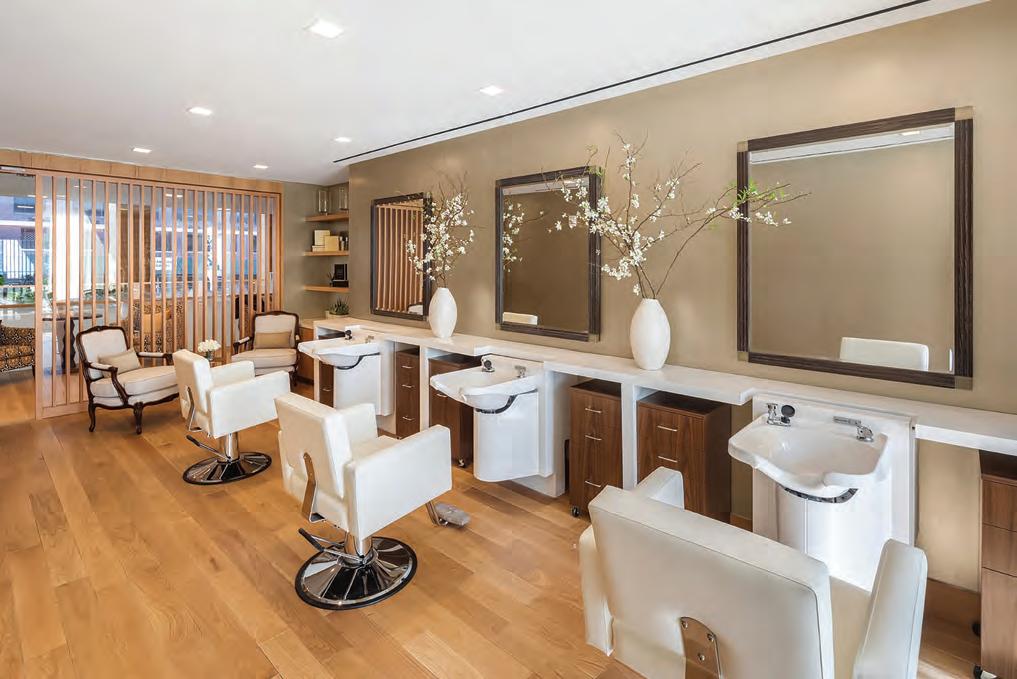

which will entail adding “culinary support specialists” to Inspīr’s memory-care floors (other floors are dedicated to assisted living and enhanced care) to “provide really healthy culinary experiences—not just involving food.” Residents, he mentions, have begun participating in the creation of meals, snacks, and beverages, “which gives them a sense of purpose and engagement along the way, while boosting their nutrition and hydration.”
Though some people come from other parts of the country (and, in some cases, the world), the bulk of Inspīr’s residents skew affluent, often having lived in upper Manhattan. This is where the luxury experience comes into play: think limousine services, facials, private massages, a Mercedes-Maybach house car, round-the-clock concierge service, a bar and library, and a forthcoming “salt therapy room” which will “promote respiratory and skin health.” “They have a certain expectation of their lifestyle, which they’ve had for many, many years,” explains Geyser. “We are unique in the sense that we are a luxury brand, and we are catering to a particular segment of the older adult population.” (It’s worth noting that Inspīr’s resident population doesn’t just reflect the socioeconomics of upper Manhattan,
TO SATIATE THE WANTS AND NEEDS OF THE A GING POPULATION, INSPĪR CARNEGIE HILL HAS ADOPTED A PROGRESSIVE AND WELLNESS-MINDED PHILOSOPHY WHEN IT COMES
TO SENIOR CARE, INSPIRED HEAVILY BY LIFESTYLE PRINCIPLES FROM “BLUE Z ONES” TO ENCOURAGE MENTAL AND PHYSICAL VITALITY.
but the diversity of the city as a whole, too—last year Inspīr became SageCare certified, meaning the facility is one of the few senior living centers equipped to care for LGBTQ+ elders.)
Still, Geyser says, “aging is not easy for anybody, whether you’re affluent or not. When you get older, you’re much more prone to isolation and loneliness. By keeping [our residents] functionally optimized and through all of the wonderful things we do, we’re preventing loneliness.”
Senior living isn’t a particularly “sexy” concept (in fact, it can feel quite dismal, bleak, and sad), but Inspīr is transforming that. Through its forwardthinking approach, carefully considered amenities, and growing list of innovative features, Inspīr is also, in many ways, revolutionizing the way we think about aging. “Aging can be extremely joyful,” Geyser says. “It can be gratifying. It can be meaningful. We help our residents tap into that—the fun and laughter and amazement of getting older.”
THE WORLD OF WELLNESS IS WILD, COMPLEX, AND INCREASINGLY FILLED WITH DANGEROUS FAST-FIXES. TO NAVIGATE EVERYTHING FROM MEDITATION TO FITNESS AND MORE, WE WENT STRAIGHT TO THE EXPERTS.
Best-selling author and the reigning voice in personal development with her self-titled podcast, Mel Robbins has
become a global sensation. Ted Hildner tunes in.
About a decade ago, a funny thing happened. One Saturday morning, I was randomly scrolling through TED Talks on my computer. At a dinner the night before, a friend told me about a nasty gal we both knew who had given a TED Talk exaggerating her successes and bragging about what a great person she’d become. Don’t judge; you would have searched, too. There I was, coffee in hand, and as I was scrolling, I stumbled across a talk from 2011 that hooked me titled “How to Stop Screwing Yourself Over.”
Mel Robbins was (and still is) a pretty blond who spoke with a Midwestern drawl that was friendly and grounded, with just enough confidence to tell me she was intelligent but not arrogant. Instead of preaching, her laid-back delivery made me feel like I knew her. She did it so well that after her 20-minute talk, this self-help cynic was online searching for more Mel Robbins, forgetting about the haircut I’d now be very late for. Little did I know what a wild day I was about to have.
Robbins threw it all out there—her adult failures and regrets—for the world to judge. The irony was that she was onstage in San Francisco speaking to a group of high-functioning tech types and do-gooders who had paid a lot of money to hear her TED Talk. Her talk was more like a qualification at an AA meeting: humble with just the right amount of self-deprecating. She wasn’t afraid to admit she had been in trouble and wasn’t pious when revealing how she climbed out of a dark hole.
They say necessity is the mother of all inventions, and it was necessary that things in Robbins’ life had to change. “I found myself at a rock-bottom moment,” Robbins confesses. “And at some point in your life, you will find yourself there. When that happens, you realize a couple of things about life. One of them is that no one is coming to save you; and as much as the situation that you’re in is unfair, and you may not be responsible for where you are in your life at this moment, you will have something happen where you realize that it’s your responsibility to stop bitching and to do something.”
They also say that great people might not be the most intelligent but possess that “it factor” that gives them the power to go farther and rise above. About three years before this talk, Robbins discovered the “it” within herself, and things began to change. “A friend of a friend called me, and by this point, I had networked my way through a lot of jobs. She said a person she knew was putting together an event in San Francisco, and it’s a bunch of speakers, and they’re looking for somebody to come and talk about career change, and you have changed your job more than any human being that I know.” With that unusual qualification, Robbins says with a chuckle, she was invited on a journey that would unknowingly change the course of her life and that of countless others.
“Fifteen years ago, my husband and I were $800,000 in debt and liens had hit the house. I had lost my job. I did not create a vision board and say to myself, ‘You know what I’m going to do? I’m going to go become the number one female voice globally in personal development.’” Robbins
realized she had to stop making the same mistakes over and over. She had to stop feeling bad for herself and do something different and make the changes necessary to alter her life. Robbins admits the TED Talk was the first time she had ever spoken publicly about her life, her problems, and her quest for her magic “it.” She barely prepared for the talk, accepting the trip because of free plane tickets. “C’mon, they were offering two tickets to San Fran and two nights at the St. Regis. That sounded awesome. When you’re struggling to pay your bills, that’s a pretty friggin’ good deal.”
The “it” that brought her to San Francisco and beyond has become known as her “Five Second Rule.” “There is a five-second window that defines your whole life, and it’s always present. It is the moment of hesitation. It’s this moment where you have an idea, an impulse, or an instinct,” she explains. Robbins discovered that this gap between knowing what you need to do versus doing what you want to do is where most of us hesitate and then, instead of taking the right action, either repeat our habitual patterns or don’t do anything at all. During these five seconds, self-doubt, excuses, insecurities, and reasoning take over. “By the time five seconds have passed, you are now into the mode of what you always do, and your subconscious mind has taken over and, basically, you just got fucked by old behavior.
“I was just trying to get out of bed and not let the anxiety consume me and get the kids to school and find another job and not pummel myself with self-criticism and shame,” she confesses. So, one morning, instead of reaching for the snooze button, which had become a pattern, she started counting backward, as NASA does, and went, “Five, four, three, two, one,” and sprang out of bed. “I used it in my personal life for three years and didn’t tell anybody. I didn’t know why it worked. I was like, five, four, three, two, one. Get out of bed. Five, four, three, two, one. Go for a run. Five, four, three, two, one. Pick up the phone and network until you get a job. Five, four, three, two, one…”
This countdown method worked one day for me. Junior, a great barber who’s been cutting my hair for years, has never given me a bad haircut. But as I’ve gotten older, and a little follicle deprived, cutting my hair wasn’t always a positive experience. That Saturday morning, after being late for my haircut because I was glued to Robbins’ TED Talk, Junior was waving around his little mirror, and I didn’t love what I saw. Jokingly, he said he could shave it all off. With my newfound life tools, I simply said, “Five, four, three, two, one. Cut it off!” It wasn’t a life-changing move, but it was liberating. For a conservative guy, especially regarding my hair, it was a bold decision.
Throughout the day, as if on autopilot, I told anyone who would listen about Mel Robbins and her magic principle. But here’s the unbelievable part of this tale, some might even say a sign from above: 12 hours after stumbling across “How to Stop Screwing Yourself Over,” I was repeating the story at a dinner when my host picked up the phone, whispered something to the person on the other end, and handed it over. As if the seas had parted, I was speaking with a woman who, on the other end, had that familiar Midwestern accent, with just
enough confidence to tell me she was Mel Robbins. Unlike the Wizard of Oz, the voice on the other end was real. She was as excited about my discovery as I was. How reaffirming to know she was sincere and legitimate in her discovery and truly thrilled to be passing along the secrets of her success.
From that moment on, I became a Mel Robbins superfan. Not surprisingly, and no help from me, Robbins has gone on to establish herself as the number one female voice globally in personal development, who, in the beginning, she never sought to become. A New York Times best-selling author and a Forbes “50 over 50” honoree whose work has been translated into over 41 languages, Robbins has sold millions of copies of her breakout book The 5 Second Rule and followed it up with the equally successful The High 5 Habit the Mel Robbins Podcast in October 2022, winning both Webby and Signal Awards. She has been recognized as the number one education podcaster in the world. As if that’s not enough, Robbins founded 143 Studios, a female-led media company that produces provocative and award-winning content with unprecedented results: millions of books sold, billions of video views, seven number one audiobooks, and original courses and profes sional development education programs for clients like Starbucks, Ulta Beauty, JPMorgan Chase, LinkedIn, Spotify, Headspace, and Audible.
Somehow, with all her talent and fame, Robbins remains one of the most down-to-earth people you’ll ever meet. According to a friend who has known her for years, “the person you see every day online is exactly the same in real life.” Robbins lives in Vermont with her husband of 26 years and their three kids. And even though she will always be a self-described “Midwesterner” at heart, she’s become a true self-help guru, a hero to millions of people whose lives have changed dramatically from that moment Robbins took one small step to help herself in front of a crowd in San Francisco.
“You will have
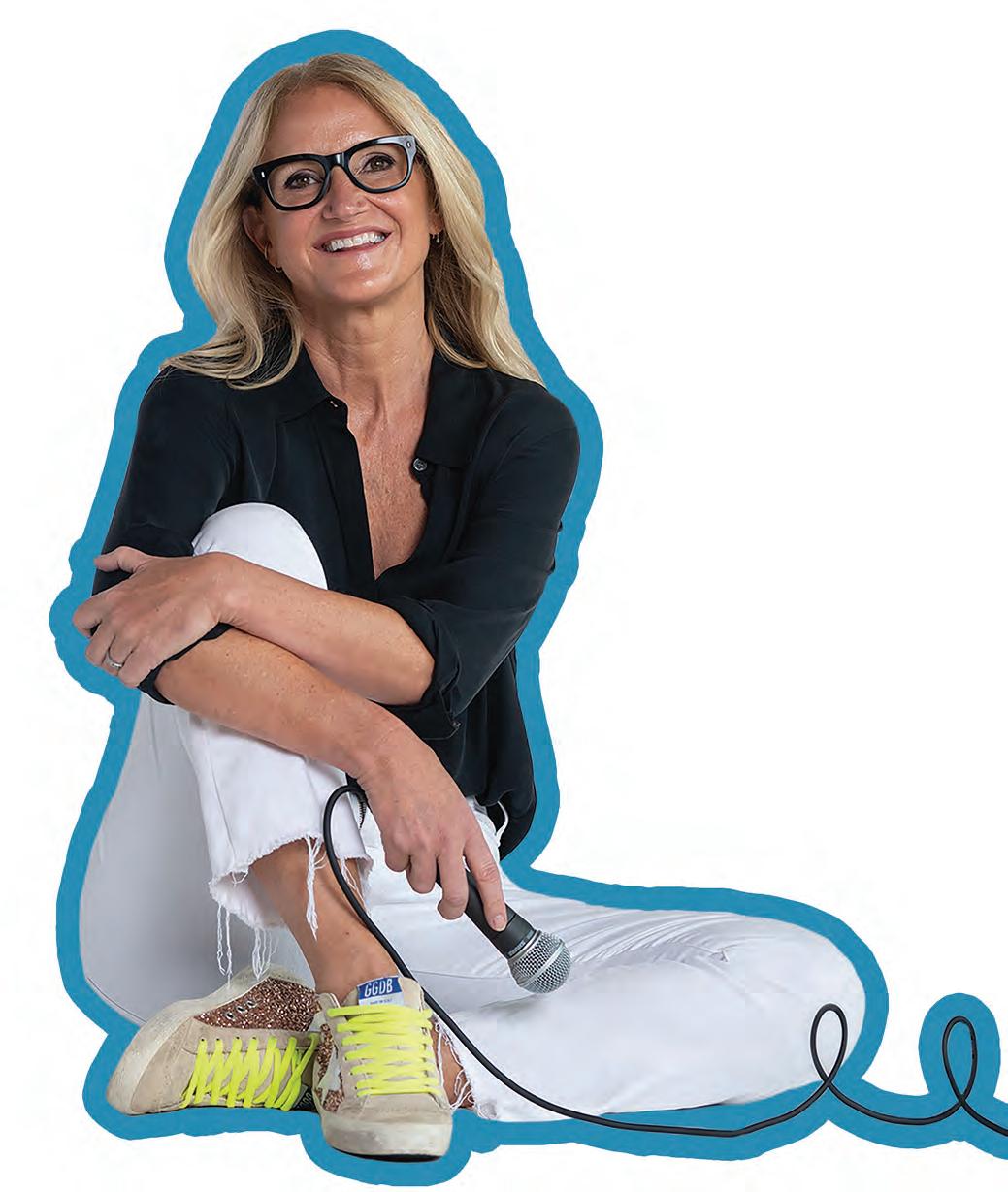
Stephen Cheuk’s S10 Training gym has become New York’s coolest nonmembers’ club to sweat it out. Carson Griffith feels the burn.
Stephen Cheuk, the handsome fitness guru best known as the founder of S10 Training, is as devoted to health as the 8,000-square-foot full-service wellness utopia he has built in New York City’s West Village. “I live and breathe health and wellness, so everything in the space is everything I would want in terms of equipment, recovery, massage,” he explains in his silky-smooth Australian accent on a call from his home on the Lower East Side. “I consider myself the ultimate consumer.”
S10 Training consists of a café, workout space, and spa, each decked out with the latest in wellness capabilities meticulously considered by Cheuk’s experience and personal preferences. Served up in the café are medical-grade ingredients by Thorne, a supplement company that also provides on-site doctors to perform blood work and lab testing for everything from heavy metals to hormone levels. The private gym, where guests can train with Cheuk himself (his clients include Joe Jonas, Jesse Tyler Ferguson, and Diplo) or another member of his team (Julie “Jaws” Nelson, one of Wilhelmina’s original fitness models, is very popular) in one-on-one sessions or in small groups,


boasts equipment by top-of-the-line companies like Watson and Keiser. There are machines for metabolism and CO2 testing to maximize diet and exercise, dry needling, and soft-tissue bodywork in the treatment rooms; and six private spa areas where guests can control the music and lighting during their steams, showers, or infrared sauna.
Unlike most fitness studios in New York, S10 Training does not operate on a membership model. It opened as the first à la carte one-stop fitness space, but Cheuk admits it can be difficult to get sessions, as trainers are often booked solid.
“We’re constantly trying to hire more trainers.”
Cheuk admits he has been toying with the idea of adding a membership component to S10 Training’s services, similar to his former employer Equinox (the Printing House location sits opposite from S10’s glossy West Village location).
“This will make [S10 Training] accessible to more people, as Equinox has no competition right now. It’s basically Equinox or nothing,” he explains.
Cheuk, who is originally from Perth, Australia, initially received a bachelor of arts to become a graphic designer, but he “hated sitting in front of a computer all day.” Inspired by a friend who was a fitness trainer, Cheuk decided he might try being a personal trainer part-time for extra money and travel opportunities.
“I just become obsessed with it,” Cheuk explains. “This was almost 15 years ago, when being a trainer wasn’t cool or a career path.”
“I live and breathe health and wellness, so everything in the space is everything I would want in terms of equipment, recovery, massage.”
—STEPHEN CHEUK
The journey eventually landed him in New York City, where he cultivated a handful of clients at Equinox Printing House. Eventually, he became frustrated that he was unable to find a gym to train his clients using both the methods and materials he wanted. In 2014, Cheuk opened the first S10 location, “a little 1,800-square-foot gym in Tribeca. I remember when I signed the lease, I walked into the empty space, and I was like: ‘What the hell do you do?’ How do you do construction? How do you hire people? How do you run a business?”
For the first few months, Cheuk was the sole employee of S10 Training. But as the business grew, so did Cheuk’s need for a larger space. In 2018, he signed a lease on the current location which, after a hefty construction process, opened in January 2020—immediately before Covid. “The fact that we survived says something,” Cheuk notes earnestly.
As for S10 Training’s future, Cheuk is again looking to expand. He has his eyes set on a Brooklyn location in the immediate future, and then potentially to cities outside of New York. “This way even more people can see everything that we’ve built.”
Bob Roth is on a mission. Ray Rogers speaks to the globe-trotting enigmatic CEO of the David Lynch Foundation about schooling the world in Transcendental Meditation and its myriad benefits.
calling. His father was a WWII veteran who was on the front lines as a medical doctor in Europe before working at a veteran’s administration hospital in San Francisco. “As a kid, when I would go to work with my dad, I saw all of these WWII and Korean War veterans… I mean it was such a sad, sad situation, so much suffering,” he remembers. His mother’s career as a schoolteacher also had a profound effect on him. “I saw firsthand the difficulties that kids going to what they call underresourced schools experienced. So, when I learned to meditate and when I became a teacher, one of my first desires was to bring it to veterans and kids. I saw the suffering of people and I saw that this meditation could help people really in need—as well as everybody else.”
Oprah Winfrey, Tom Hanks, Katy Perry, Jerry Seinfeld—the list of celebrities Bob Roth has taught Transcendental Meditation to goes on and on. As CEO of the David Lynch Foundation, Roth has also guided titans of business (like Bridgewater Associates founder, Ray Dalio) and thousands of civilians, many of whom credit him and the method he teaches with changing the course of their lives. But if he’s anyone’s “guru,” it’s more in the traditional sense of the word.
“‘Guru’ just means teacher, a genuine, authentic teacher,” says Roth, 73, in his unerringly kind, plainspoken way. “Look at what teachers do—I still remember my teacher in second grade,
Mrs. DeVilbis—they are the people who guide us on an authentic path. You wouldn’t call your professor at NYU medical school your guru. But that professor at NYU medical school? That’s a real guru. Or a mentor at a business, or a grandparent who offers wise advice, that’s what I think a true guru is. But the pop or trendy understanding of ‘guru’ is often not anchored in reality.”
As an 18-year-old college freshman searching for some sense of peace in the midst of the chaos and turmoil of the late ’60s, what initially drew Roth to Transcendental Meditation (TM) was the fact that it is backed by science. A career teaching meditation wasn’t on his agenda when he enrolled in Berkeley in 1968. “I wanted to go to law school to become a U.S. senator like [Robert F. Kennedy], I went there with a mission to make a better world,” he recalls. A skeptic by nature (“I like new ideas, but I don’t like New Agey, untested things”), Roth was introduced to TM by a trusted friend, and its science-backed evidence and relative ease appealed to him.
In TM, participants meet with a teacher and are given their own sound mantra, which they silently repeat while seated for 20 minutes in the morning and again in the evening. Roth took to it instantly. Of that fateful first stab at it, he says: “It was so physiologically relaxing, deeper than anything I’d ever experienced.”
Roth’s upbringing instilled in him a desire to help others and with TM, he had found his
Like in the late ’60s, the world is currently in pervasive crisis mode once again. As Roth sees it, the need for meditation now cannot be underestimated. “Twenty years ago, people could’ve thought something like meditation or TM was a luxury, for people on the Upper East Side in New York or something like that. But now, I call it a pandemic of stress and trauma. There’s so much research on Transcendental Meditation that shows it’s actually more effective than many medications that I think society is going to change, and people are going to have to incorporate a few minutes twice a day for deep meditation into their impossibly busy schedules. Otherwise, we’re on a downward spiral of stress, trauma, sickness, violence. It’s not a promising vision of the future.”
It’s certainly not some New Age dream. The first research on TM was conducted by Dr. John Allison, a London GP, back in 1969, followed by studies at Harvard Medical School in the 1970s, published in the two most prestigious journals, Science and Scientific American , in 1970 and 1972, respectively. “It showed that during TM your body gains a state of rest in many regards deeper than the deepest part of deep sleep,” Roth explains. “Yet, brainwave research showed that when the meditator was in a state of deep inner peace and wakefulness, it was not sleep, it was not hypnosis, it was not an altered state; it was just a unique state of restful alertness.”
Since then, there’s been roughly 400 studies published in top medical and scientific journals in the U.S. and all over the world, including $30 million in grants from the National Institute of Health and the Department of Defense. The findings, says Roth, “show that Transcendental Meditation is incredibly effective for reducing stress and stress-related disorders like anxiety, depression, burnout, for improving focus, concentration, problem-solving ability, and increasing happiness and sense of well-being.”

“That professor at NYU medical school? That’s a real guru. Or a mentor at a business, or a grandparent who offers wise advice, that’s what I think a true guru is.”
—BOB ROTH
A sure sign meditation has entered the mainstream? The David Lynch Foundation is currently in discussions with a number of insurance companies that are looking to include TM in their reimbursable packages. In New York City, the FDNY and NYPD have a foundation which is paying for firefighters and police officers to learn TM, and the David Lynch Foundation has taught meditation to some 500 assistant district attorneys, as well as to women who are survivors of domestic violence, through family justice centers that are paid for by the DA’s office. “And we’re now offering TM in 42 hospitals in New York City to doctors and nurses on the front lines,” says Roth proudly. “So, right now New York City’s at the forefront in the world of the David Lynch Foundation and TM.” New York City is also at the center of Roth’s world. Born in Washington, DC, and raised in the Bay area, Roth travels the country and the globe— the David Lynch Foundation is in 35 countries— but his home base is happily here in Manhattan, where he lives on 33rd Street and Madison Avenue. “I love, love, love New York!” raves Roth. “I’ll be in another city, anywhere in the world, thinking, ‘Oh, this is so beautiful, it’s so calm, it’s so peaceful,’ and as soon as the plane is coming down into JFK or LaGuardia, I just go, ‘Ahhh! Home.’”
A regular at MoMA, and an enthusiastic restaurant diner—Asian and Italian are his favorites— you might run into him on a Circle Line, cruising around the Statue of Liberty, just for the joy of being out on the water in NYC. “I love the creativity, I love the intensity, I love the anything-is-possible,” he says about Manhattan. “I mean, the city has huge problems we have to attend to, and we are working with governments and hospitals, and we’ve actually launched something called Meditate New York. There’s an openness to meditation in New York City—a serious openness—that I don’t find any other place in the world.”
Dr. Neil Paulvin is on speed-dial for in-the-know New Yorkers looking to live longer, healthier lives. Ray Rogers rings Dr. Paulvin and discovers that in Manhattan, health is truly wealth.

For a certain set of discerning New Yorkers interested in cracking the longevity code—living longer, healthier lives than previously thought imaginable— Dr. Neil Paulvin has become one of the must-see experts. The key to his success? “I’m like a translator,” he says. “I can take all of that complicated information that people are hearing online or from their friends and tell them what to do, how to do it, and what their goals should be. I can map out a full plan for them for all facets of their health.”
Specializing in functional medicine, integrative sports medicine, regenerative medicine, osteopathic manipulation, and craniosacral therapy, there’s not a lot he can’t advise on. “I can handle all of their concerns,” he says, “be it antiaging, or ‘I have back pain,’ or ‘My gut is bothering me.’”
His quest for knowledge and seeking innovative, out-of-the-box solutions stemmed from firsthand experience with chronic pain while in medical school at the University of Medicine and Dentistry of New Jersey. “I was dealing with headaches, and looking for the next, newest thing and best approach to help me get through that,” recalls the New Jersey native, speaking from his Midtown Manhattan office. “I went to multiple doctors to help me, and I ended up helping myself. That led me down a road of looking at alternative therapies like acupuncture, dry needling, and meditation, initially. I also have a sports medicine background, and that got me into the cool new stuff like PRP [plateletrich plasma, which is plasma with many more platelets than what is typically found in blood] when it came out 15 years ago, which begat a lot of
the hormone therapy, which begat antiaging. It all started from that after med school to where I am today, mixing traditional and New Age approaches to try to help people optimize their health.”
Much of his clientele have tried doctors with more traditional approaches, without success, before finding Paulvin. “I tend to lend myself to patients who’ve seen 10 different doctors and they tell them they’re crazy, it’s in their head. I provide hope to people who’ve been told they have no hope.”
The incredible advances in the longevity field continue to wow him. He’s a fan of peptide therapy to combat inflammation, improve cognitive brain function, and help with mitochondrial health in the gut. And say goodbye to the days of the cookiecutter approach to health. Today it’s all about personalized, comprehensive lab work that allows doctors like Paulvin to look at patient’s proteins, metabolism, and DNA to develop personalized health plans. “We’re looking at much more advanced specific heart markers, patients’ biological age, and we’re now taking stool samples to look at the microbiome in their gut,” he says. “We take all of that information as markers of their biological health, and we can hopefully prevent them from being sick.”
He’s particularly excited by modalities such as hyperbaric therapy and red-light therapy, which are now being used to treat Alzheimer’s, Parkinson’s, and concussions, “and helping patients deal with chronic pain issues that we couldn’t deal with before.”
The future of the longevity field is wide open, he notes, “with gene therapy and also the tech that’s coming down the pike, such as artificial intelligence [AI].” Already, AI heart studies are giving a much more advanced look at the heart, he says, “so we can look at the exact blockages to determine what type of blockage is it. There are so many things that we couldn’t do before. They’re now doing AI skin exams.”
Beyond that, the next big trend in his eyes is the increased popularization of medical tourism. “Two years ago, I’d suggest to patients they check out clinics in Canada or London, for example. Now, I’ll see a different patient just about every day who tells me they’re going to Canada or Switzerland to go to this clinic or that one. Especially in the affluent community, patients are taking their health in their own hands and spending a lot of
“I was dealing with headaches. I went to multiple doctors to help me, and I ended up helping myself. That led me down a road of looking at alternative therapies like acupuncture, dry needling, and meditation. It all started from that after med school to where I am today, mixing traditional and New Age approaches to try to help people optimize their health.”
—DR. NEIL PAULVIN
money to do it, trying to get the best that’s available to them. It’s been a real explosion, in Dubai, Ibiza, London, and Tokyo… There [are] so many opportunities available to people that weren’t available before.”
If a patient is interested in stem cell procedures, for instance, they must travel abroad, for legal reasons. “We’re probably the most limited in the world on that—if we take stem cells from you, we can’t manipulate them in the U.S. But in any other country you can go in there, add growth factors, or other specific things to make them work better. They’re using them for everything: antiaging, to heal your rotator cuff, Alzheimer’s, other brain issues, and for gut health.”
But for generally healthy individuals, one doesn’t have to travel far or go to any extremes to reap the benefits of the current scientific knowledge in the health space today. The single most important longevity hack, according to Paulvin? Regular exercise (the data we have now, he notes, dictates a minimum of 60 to 90 minutes of weight-bearing exercise per week, and up to 30 minutes of cardio per week), with proper and consistent sleep being a close second.
Both of these are in short supply and high demand in Paulvin’s personal life at the moment. But cut
the man some slack, the 50-year-old physician has a newborn at home (his first). “We have a nine-month-old girl and that’s changed things a lot. I don’t get much sleep unfortunately anymore. But in a vacuum, I try to maintain a normal sleep pattern, my circadian rhythm, seven days a week. I have patients who maintain normal sleep habits during the weekdays and wake up later on weekends; it’s called ‘social jetlag,’ and it can make you feel worse in terms of weight and energy.”
For exercise these days, Palvin squeezes it in whenever he can, even if it’s only for 10 minutes. Since he has a bad shoulder, he prefers lower body weight exercises two to three times per week and high-intensity cardio. “You can also achieve a lot just by doing a full yoga program,” he notes. “If, say, you have an injury and can’t lift weights, if you do a full yoga practice, you’re getting enough body weight exercises and cardio to achieve those same goals.”
Beyond those basics, he swears by saunas three times a week, and of course maintains a healthy diet. “I pay attention to my gut a lot more, so I do a lot of colostrum [a nutrient-rich supplement from bovine breast milk that’s touted for gut health and other benefits], I’ve increased my fiber intake, and I do a lot of red-light therapy.”
For someone deeply invested in health, living in New York City certainly has its perks. “I love the fact that if I want to jump into a hyperbaric chamber or do some advanced yoga, it’s all available to me right here in Manhattan; I don’t have to travel an hour to do it.”
Investor, writer, podcaster, NYU professor, Scott Galloway wears a lot of hats. Irreverent, honest, and sometimes hilariously naughty, it’s no wonder the New York Times dubbed him the Howard Stern of the business world. With a new book, Galloway speaks to George Hahn about how we can all get our finances back in shape.
To be economically secure is to be loved… [America] is a loving, generous place if you have money; it’s a violent, rapacious place if you don’t,” says Scott Galloway. The author has firsthand experience with our country’s duality. The 59-yearold best-selling author—whose new book, The Algebra of Wealth: A Simple Formula for Financial Security, came out in April—was raised by a single mother on a secretary’s salary. As an adult, he again found himself in a vulnerable financial position due to increasing his lifestyle to match his income, rather than prioritizing saving. “Capitalism produces unbelievably seductive, almost irresistible, offers. I want to make people aware of those temptations, and just show them—with some basic principles you can cement into your daily activity—that you can end up in a good place.”
It’s this message, and finding and maintaining financial security, that have become a tentpole in his own brand message.
Galloway sprung onto the radar of many in 2019 when he called out the now famously ridic-
ulous WeWork prospectus and the cult of Adam Neumann with an incendiary, but accurate, post on his weekly blog and newsletter, No Mercy / No Malice. From there and on his award-winning podcast, The Prof G Pod, Galloway shared his expertise and experience, combining “business insight and analysis with provocative life and career advice.”
In addition to the work through his media company, Prof G Media, along with regular appearances on CNN, MSNBC, and Real Time with Bill Maher, Galloway is also the cohost of the essential biweekly podcast Pivot, where he, Kara Swisher, and their guests discuss the latest in tech, business, and politics.
The Algebra of Wealth is organized around four key disciplines: stoicism, focus, time, and diversification. These four ideas were inspired by his own work and life experience over the years, as if, he says, “I was going to try and give my 18- or 28-yearold self four basic principles to ensure that I would get rich slowly, but I would end up economically secure.” They are straightforward concepts that, according to Galloway, stand the test of time.
One of Galloway’s biggest takeaways from his times of financial un-wellness might be summed up in one word: diversification. “I was never diversified enough. I was always overly invested in my company or tech,” he laments. “Diversification is your Kevlar.”
He attests that diversification benefits not just your financial well-being, but also your mental health. “When you’re so invested in one thing, you’re constantly checking your phone,” he notes. “It can just ruin your gear.”
“We live in an era of innovation in finance, but no cryptocurrency or payment app will offer what I want most—to send money back in time, to the people I loved who didn’t have it.”
—SCOTT
The following is an excerpt from The Algebra of Wealth: A Simple Formula for Financial Security.
A few years ago, we went skiing, a hobby I endure to trap my boys on a mountain so they have to spend time with me. One afternoon, I’m in our hotel room in Courchevel, using work as an excuse to escape my on‑piste obligations. My eldest, who was 11 at the time, comes in, and I know something is wrong. As a rule, both sons reflexively announce themselves whenev er they enter a room with a question or bodily function. (“Can I watch TV?” “Where’s Mom?” Belch.) But… silence, until he’s in front of me. He’s been crying.
“What’s wrong?”
“I lost a glove.” More tears.
“That’s okay, it’s only a glove.”
“You don’t understand. Mommy just bought me these. They cost €80. That’s a lot of money.
She’s going to be angry.”
“She’ll understand. I lose stuff all the time.”
“But I don’t want her to buy me another pair—they were €80.”
Easy for me to be empathetic here. My son’s tendency to lose stuff is inherited. My ex‑wife said if my penis wasn’t attached, we’d run across it in SoHo on a card table next to secondhand books and a script for Goodfellas I don’t carry keys, what’s the point?
So, I got this. We agree to retrace his steps. Along the way my mind races: Is this a life les son? Would buying him a new pair be coddling? I look down—he’s crying. The ground splits beneath me, and instantly I’m nine again.
After my folks separated, economic stress turned to economic anxiety. Anxiety gnawed at my mom and me, whispering in our ears that we weren’t valid, that we’d failed. My mom, a secretary, was smart and hardworking… and our household income was $800 a month. I told Mom, at the age of nine, that I didn’t need a babysitter, because I knew we could use the additional $8 a week. Also, when the ice cream truck came by, my sitter gave each of her kids 30¢ and me 15¢.

“It’s winter, you need a jacket,” my mom said; so off to Sears we went. We bought one a size too big, as my mom figured I could get two, maybe three years out of it. It cost $33. Two weeks later, I left my jacket at Cub Scouts, but I assured my mom we’d get it back at the next meeting. We didn’t.
So off to get another jacket, this time to JCPenney. Mom told me this one was my Christmas present, as we wouldn’t have the funds for gifts after buying another jacket. I don’t know if this was true or if she was trying
to teach me a lesson. Likely both. Regardless, I tried to feign excitement at my early Christmas present, which, incidentally, also cost $33.
Several weeks later… I lost the second jack et. I sat at home after school, in fear, waiting for my mom to come home and absorb another body blow to our already economically feeble household. I heard the key turn, she walked in, and I nervously blurted out, “I lost the jacket. It’s okay, I don’t need one… I swear.”
I felt like crying, bawling really. But some thing worse happened. My mom began to cry. Then she composed herself, walked over to me, made a fist, and pounded on my thigh sev eral times as if she were in a boardroom trying to make a point, and my thigh was the table she was slamming her fist on. I don’t know if it was more upsetting or awkward. She then went upstairs to her room. She came down an hour later, and we never spoke of it again.
Economic anxiety is high blood pressure— always there, waiting to turn a minor ailment into a life‑threatening disease. That’s not a metaphor. Kids who grow up in low income households have higher blood pressure than kids who live in wealthy ones.
Meanwhile, back in the Alps, a dad and his one gloved son have been walking for 30 minutes in eight‑degree weather. I attempt to take advantage of his weakened state and break into a song and dance about how things aren’t important, but relationships are. In the midst of this bad Hallmark Channel scene, my son stops, then sprints to a small Christmas tree in front of the Philipp Plein store. The same store where, the day before, his eight‑year old brother tried to persuade me to buy him a €250 hoodie with a bedazzled skull on the back. On top of the tree, in place of the star, is one electric blue boy’s glove. A good—and creative—Samaritan had found it and placed it within eyeshot of any boy searching for the vibrant accessory. My son grabs the glove, sighs, holds it to his chest, and visibly feels a mix of relief and reward.
We live in an era of innovation in finance, but no cryptocurrency or payment app will offer what I want most—to send money back in time, to the people I loved who didn’t have it. The insecurity and shame present in my childhood home will always be there. But that’s okay, as it was motivating.
Your pursuit of wealth may be driven by something else. Perhaps validation, or a feeling of purpose. A passion for the good life, luxuries and experiences only money can bring. The desire to do something about the ills of the world. In my experience, noble in tentions are a good motivation for hard work, and desire is also powerful— but fear bests them both. What drives you is your business. Find it, nurture it, and carry it with you.
You will need motivation, as there is hard work ahead.

MOTHERS AND FATHERS ARE BEING CELEBRATED THIS SEASON WITH THE MOST STYLISH ACCESSORIES IN TIME FOR SUMMER.
available at Valentino boutiques

Chopard “Alpine Eagle” XL Chrono men’s watch, 44mm, automatic in titanium, $25,000; chopard.com
Alexander McQueen
“Birdee” brogue, price upon request; alexandermcqueen.com and Alexander McQueen, Miami Design District store

savannahfriedkin.com





The sleek new hotel Kalesma is an oasis of style and privacy on a Greek island most known for 24/7 partying. Peter Davis checks in and chills out.
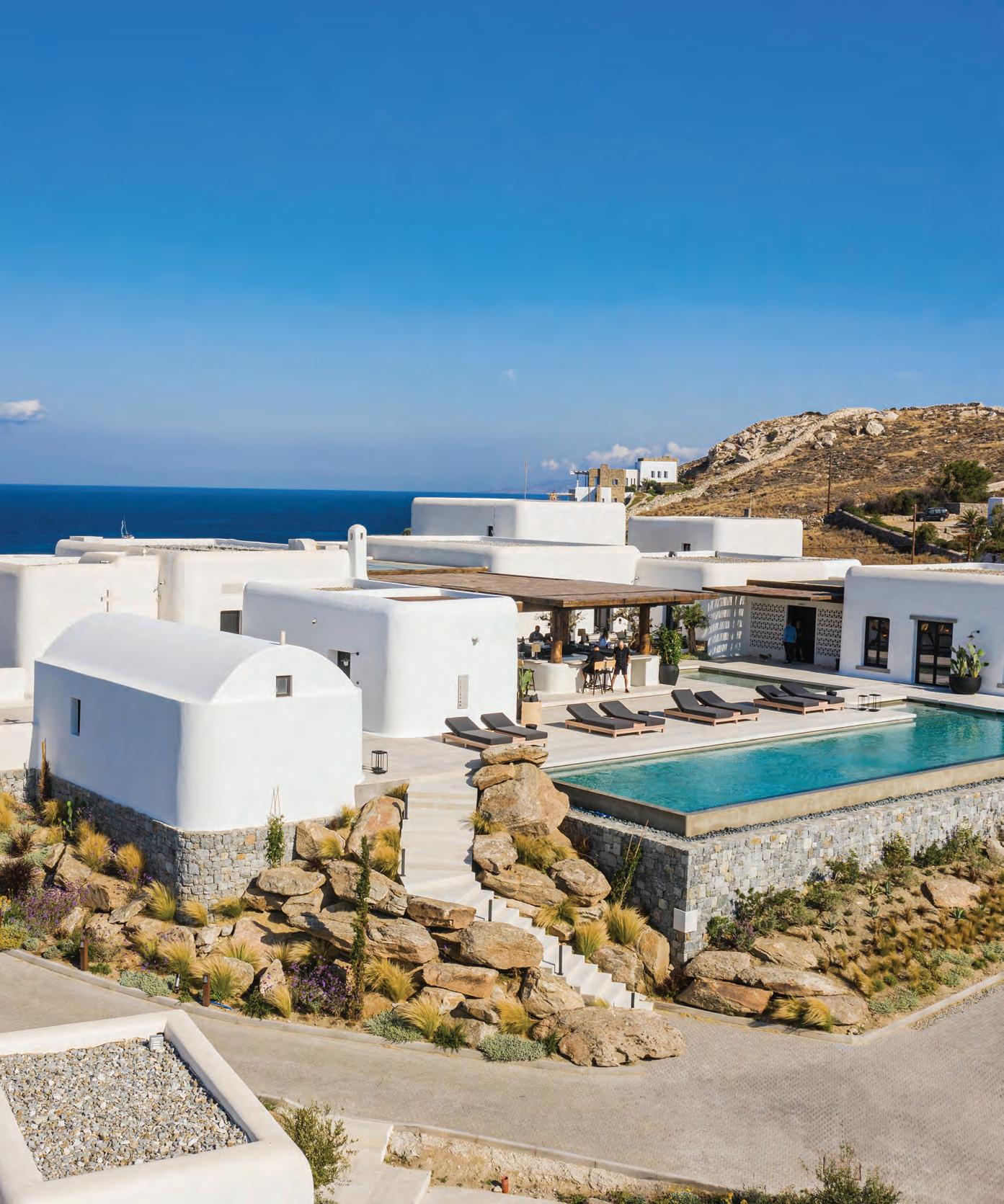
THE DISCREET ENTRANCE FEELS LIKE ENTERING A SHIPPING TYCOON’S PRIVATE GREEK COMPOUND.


Ihadn’t visited Mykonos—the ruggedly rocky Greek island and, since the 1960s, the pictureperfect party playground for the international jet set—in over a decade. Summer after summer, I endured serious social-media FOMO as posts of fashionable friends posing pretty by white-washed buildings with seablue window frames or whooping it up at a fancy beach club flooded my Instagram feed. Most everyone who travels to Mykonos in the summer rents a villa, as, until recently, five-star hotels were as scarce on the island as an affordable lunch. But things are changing fast on the “Island of the Winds.”
Enter Kalesma (which means “invite” or “calling” in Greek), Mykonos’s most luxurious and stylish boutique hotel. Perched high on a hilltop, it affords guests with 360 views and overlooks Ornos Bay to its east, where billionaires like to dock and flaunt their tricked-out big-boy boats.
After a blessedly direct flight (a ferry from Athens can take anywhere between one and a half to five hours), I zip over to the off-the-beaten-track Aleomandra neighborhood on the southwest side of the island. The discreet entrance to Kalesma, a collection of 25 private suites that resemble mini vil-
las and two grand houses for families or big groups, feels like entering a shipping tycoon’s private Greek compound. In the lobby sits a Rick Owens “Double Bubble” sofa and pieces by Serbian artist Aleksandar Vac. The open-air flow of the resort, outdoor restaurant, and infinity pool, all by Greek designers Studio Bonarchi and K-Studio (the architects behind the new Mykonos airport, which opened in 2021), used local artisans and organic materials like wood, marble, sandblasted stone, and osier to create a new take on traditional Cycladic style. Call it “Mykonos Moderne.”
The leveled walk down to my hilltop suite is scented by bougainvillea. Kalesma’s five acres have been meticulously landscaped with over 20,000 plants, including 60-year-old olive trees, fuchsia and tangerine vines, and fragrant herbs sprouting up everywhere. My suite is massive, with a 970-square-foot patio and a plunge pool hidden from prying eyes by a long stone wall and strategically planted bushes and trees. The walls are whitewashed with stone floors and ceilings crafted in an old-world Greek style with chestnut and bamboo. Surprising details are everywhere, from the sconces wrapped in horsehair by the studio Apparatus, to custom metal clothing hangers with equineshaped hooks—both nods to the Greek myth that

Apollo once stabled horses here. Floor-to-ceiling French doors open to a view of the glowing bright blue Aegean Sea. My suite seems so secluded and intimate it’s hard to imagine bothering to leave and explore the island.
The next day, I reluctantly pull myself from the king-size bed. Kalesma treats all guests like VIPs and will chauffeur you anywhere. I book a car and check out Solymar beach club on the sandy shore of Kalo Livadi. Beach clubs on Mykonos cost money, so be prepared to pay a hefty fee for a chair and umbrella by the water. Sur la plage, a million and one different languages seem to be spoken at once. There’s the Italian couple in matching Fendi swimwear and gold Rolexes that I overhear arrived via helicopter from nearby Santorini and landed at Solymar’s private helipad just two minutes from the club. Wading waist-deep in the sea, a well-tanned Russian guy, a scaly snake tattoo spiraling around his bulging bicep, sips a cocktail and barks what sounds like a big bank transfer


into his iPhone. The scene is flashy and fun. For dinner that night I book a table at Alemagou, which is like a loud party where most guests start eating under the thatched roof at 10 PM. I order the sea bream carpaccio and the fresh house salad of tomato, tamarix, and Mykonian sour cheese. At midnight a DJ blasts house music and everyone hits the dance floor—or dance on top their chairs as coffee is served.
The next night, I angle for a spot during sunset at the insanely popular Scorpios on Paraga beach. It’s the hardest reservation to book on the island— but the concierge at Kalesma has magical connections and makes it happen in minutes. A rambling beach club with massive wicker sculptures that double as impromptu VIP rooms, Scorpios exudes a tribal-like vibe. Think Burning Man without the
dust and car exhaust. As the sun sets, everyone puts down their cocktails and snaps the view from the edge of the cliff overlooking the sea. Then, after posting their sunset pics and tagging Scorpios, the music pumps up, arms get thrown in the air, and literally everyone starts wildly moving to a DJ accompanied by a row of live drummers. Through a well-connected friend, I snag a table the following evening at Nōema, which is in the heart of Mykonos town (or chora, as Greek villages are called). The narrow streets around Nōema are packed. Stores selling evil eye pendants, as well as Gucci, Louis Vuitton, and Dior, stay open until midnight. The restaurant is tucked away in an open-air courtyard. A band plays Greek pop music, and everyone table-hops. It’s a chic scene, but the food is the real star. The menu by culinary
 STAIRWAY TO HEAVEN
STAIRWAY TO HEAVEN




director Athinagoras Kostakos follows Cycladic cooking techniques and uses all locally harvested ingredients. The charcoal-grilled lamb chops come with a raw relish of tomatoes, capers, olives, oregano, and fresh mint and are perfect with a side of spiced feta with olive oil and crispy bread. Also delicious: the burnt Dover sole in a white wine sauce with fennel and garlic. For dessert, I decide to pig out and order both the carob and Greek coffee tiramisu and the crispy meringue with cardamon cream and citrus fruits.
Perhaps the best meal I experience on the island is at chez Kalesma at the hotel’s restaurant, Pere Ubu. The ideal time to dine here is right when the orange sherbet sun starts to sink behind the nearby island of Delos (an archeological wonder that is worth spending a day exploring).
Pere Ubu is open air, bordering the pool with a long bar and fire pits bustling with a young, crazyattractive crowd. Dinner is a decidedly family affair as huge mezze platters (homemade hummus, tzatziki, smoked eggplant) arrive at long tables with plates of seaweed pancakes, smoked sardines, lardo, sea urchin butter, and dried fig leaves. The grilled scallops come with a carrot vinaigrette, trout roe, and Mykonian sausage. For dessert, I have the kataifi: chocolate and hazelnut mousse stuffed with shredded phylo, Greek coffee molasses, and orange caramel. “We are genuinely passionate about the hospitality that centers around the dining table,” Aby Saltiel, who owns the hotel with partner Makis Kousathanas, tells me. “The idea was inspired by the customs surrounding the family homes in Mykonos, which on many occasions are opened to gather and feast and drink in good company to honor a member of the household or a patron saint.” The authentic cuisine, the Rick Owens sofa, the beautiful-people social scene—all are reasons to never want to leave the Greek oasis that is Kalesma.

THE IDEAL TIME TO DINE AT PERE UBU IS RIGHT WHEN THE ORANGE SHERBET SUN STARTS TO SINK BEHIND THE NEARBY ISLAND OF DELOS (AN ARCHEOLOGICAL WONDER THAT IS WORTH SPENDING A DAY EXPLORING).

Rooms at this luxe escape in Sunny Isles Beach, Florida, feel like apartments on Fifth Avenue, complete crown moldings, but views are directly onto the ocean rather than Central Park. In addition to fitness classes, there are four pools for swimmers, and on-property restaurants include outposts from New York favorites Il Mulino and Avra. Unwinding in the spa begins before the treatment session starts with headphones and a meditation app in the waiting area. Cryo treatments target both pain and cellulite, and massages run the gamut from a TMJ release for those who grind their teeth, to deep tissue with a Hypervolt gun, to the “Orange Blossom,” which includes a salt scrub, massage with herbal poultices, and aromatherapy oils. acqualinaresort.com
BETH LANDMAN

Gazing out the window at 58 acres of woodlands and rolling hills studded with colorful flower beds is almost therapy enough at this country estate-like retreat in tony Washington, Connecticut. After a yoga or barre fusion class, experience the farm-fresh creations of Chef José RamírezRuiz, whose vegetable-focused Brooklyn restaurant, Semilla, boasted a Michelin star. Mustorders: the squash broth with aged meatballs, foie gras, and herbs; and the chickpea pie in a filo pastry with cheese and honey. Dining in the light-filled Garden Room, designed by Celerie Kemble, will make you feel like you’re a house guest at a friend’s chic country house. Mayflower Inn & Spa is all about style, comfort, and luxury. While you await a treatment at the Well (guests swear by the “Triple-Lift Facial,” which uses a remodeling machine and micropuncture lab method to revitalize and plump the epidermis), stretch out in an overstuffed chair while snuggled in a blanket. Before bed, nibble the oHHo CBD chocolate on your nightstand and drift off to dreamland.
aubergeresorts.com/ mayflower


A favorite of Hollywood stars looking to peel-off pounds preawards season, New Yorkers have trekked to California (and Italy) for years to experience the Ranch. Now a new location has been unveiled, and though it looks like a historic estate in England, it’s just an hour from Manhattan. The 200-acre waterfront property accepts only 25 guests at a time to experience a four- or five-day program of rigorous mountain hikes, yoga, strength training in “The Ranch Gym” (housed in the estate’s grand former ballroom), and laps in the indoor heated pool in the 5,000-square-foot solarium. In warm months there is stand-up paddle-boarding and kayaking on the on-site lake. Meals are organic and plant-based—the nutrient-rich cuisine (broccolini pesto pizza, black bean and kale enchiladas) is designed to fuel active days, promote weight loss, and build smarter eating habits. There is also IV therapy, infrared saunas, and colon hydrotherapy. Be prepared to unplug: life at the Ranch means minimal exposure to technology. Rooms have no TVs and cell phone and computer use is seriously discouraged. Think of the Ranch as a luxe boot camp where you leave with a healthier body and mind.
theranchlife.com

Established in 1974, this spartan antidote to urban life in Calabasas, California, is a weeklong program that starts with sunrise yoga and incorporates a total of 70 miles of hiking across the rugged Pacific Coast, along with functional movement, meditation, pool volleyball, and massage. Food is organic and plant-based (much culled from the spa’s own gardens) with zero caffeine, sugar, alcohol, gluten, and dairy. There is Wi-Fi, but electronic devices are seriously frowned upon. This year, a four-day program is also being offered. theashram.com


A discreet long wood gate on Montauk Highway in Water Mill hides the Hamptons’ Shou Sugi Ban House, a meticulously landscaped five-acre holistic heaven where guests can completely focus on wellness. Behind a large stone Buddha statue in the gravel driveway are 13 minimally chic guest suites around a pool, a treatment center, yoga room, and airy dining hall with possibly the best food out east, courtesy of Chef Mads Refslund, a cofounder of Copenhagen’s Michelin-star eatery, Noma. A huge draw here: the thermal suite with an infrared sauna, a dry sauna, and three outdoor Watsu hydrotherapy saltwater plunge pools (hot, warm, and ice cold). Shou Sugi Ban House, named for the ancient Japanese weathering technique of charring a wood surface, scraping it down, and then oiling it to make it more resistant to fire and decay, attracts visitors from around the world looking for the ultimate wellness escape. shousugibanhouse.com



The French countryside comes to Southern California, literally in some cases, as a 400-year-old church, windmill, l’orangerie, and parish house were uprooted and transported from Dijon to this 500-acre retreat outside of San Diego. Lavender scents the air, cottages feel like Gallic villas, and an on-property vineyard supplies wine for tastings. Hiking, cardio barre, TRX, and aquatic classes fill the mornings, while spa sessions make the afternoons more low key. Produce is sourced on property with culinary classes so guests can learn healthy cooking techniques. For those who want to get in touch with nature beyond the gardens, the star- and sun-gazing observatory has a state-of-theart Takahashi telescope and imaging technology.
cal-a-vie.com


Known as “Dr. Feelgood,” Dr. Max Jacobson used his Upper East Side medical practice to get America’s elite—including JFK, Marilyn Monroe, and Elvis— hooked on speed. Peter Davis uncovers the many lows of Jacobson’s high-flying life and career.

In the spring of 1962, President John F. Kennedy is said to have raced down a hallway of the Carlyle hotel stark naked. The incident (which would have jeopardized his presidency) was kept from the public. Also unbeknownst to the public, and Kennedy himself, was that he was hooked on amphetamines. More astonishingly, his supplier was a medical professional, Dr. Max Jacobson, whose dangerous remedies were inflicted upon a generation of New York’s elite. Born in 1900 in Fordon, Bromberg, then part of the German Empire, Jacobson, who was Jewish, moved to the United States in 1936 to flee the Nazis. There, he slowly built his practice and a reputation for himself. Known as “Miracle Max,” the list of Jacobson’s regular patients reads like a roll call of the 20th century’s biggest icons: Elvis Presley, Marilyn Monroe, Leonard Bernstein, Judy Garland, Humphrey Bogart, Elizabeth Taylor, Cecil B. DeMille, and Liza Minnelli; writers like Tennessee Williams, Truman Capote, and Rod Serling, who created The Twilight Zone; and even Nelson Rockefeller. Jacobson amassed his clientele thanks to his “IV Special,” a booster shot which he doled out at his Upper East Side office around the clock, often seeing patients at 3 AM. He was mum about what was in the mysterious vials and his patients didn’t ask, gladly letting the doctor jab them with a syringe in a quest for more energy, weight loss, and pain relief. Capote, who struggled with addiction most of his life, described the injections as “instant euphoria—flying, like Superman,” adding, “Ideas come at the speed of light. You don’t sleep, nor do you need to eat. If its sex you’re after, you can have all you want and go all night.”
What made Jacobson’s patients feel so good was reportedly a truly crazy concoction that included 28 milligrams of methamphetamine, human placenta, monkey gonads, sheep sperm, and steroids. It was a highly addictive (and deadly) recipe that only a mad scientist could dream up. Tennessee Williams immediately got hooked on the injections, falsely believing he was being pricked with a vitamin B12 shot. Williams said he felt “as a bird on a wing—I was released.” Jacobson, who once had an interest in treating multiple sclerosis before discovering that biochemistry could get him rich fast, never examined patients or made real diagnoses, preferring to reach for the hypodermic needle instead. He claimed his injections could rescue singers who had lost their voice, cure writer’s block, and combat stage fright for actors.
Jacobson’s most famous patient was John F. Kennedy (and his wife, Jackie). The doctor’s relationship with the family was so close that he traveled with the then-president on Air Force One, made house calls to see him in Hyannis Port and Palm Beach, and visited the White House 34 times over the course of 20 months. His presence was so frequent that the Secret Service dubbed him “Dr. Feelgood,” and the nickname stuck.
Kennedy first met Jacobson through Chuck Spalding, an old and trusted friend from his Harvard days. In September 1960, Kennedy was preparing to debate Nixon in the first televised presidential debate. He had lost his voice, felt fatigued, and complained of constant back pain. Jacobson injected his “energy formula” into Kennedy’s larynx and JFK’s commanding voice returned, full throttle. Kennedy ended up crushing Nixon in the debate, a swing moment in the election that he would go on to win. He began to call Jacobson regularly, using the code name “Mrs. Dunn” when he would ring the doctor in his New York office. Naturally, Jacobson was ecstatic about the connection. “He made me feel whatever I said was meaningful,” Jacobson wrote in his unpublished memoir. “And all-important was my advice.”
When Kennedy was in the White House, Jacobson, with his signature thick eyeglasses and German accent, became part of the inner circle. He was a guest at the inauguration and the president’s birthday party at Madison Square Garden. He flew with the president to summit meetings in Paris and Vienna, when Kennedy met with Nikita Khrushchev, the Soviet leader, in the summer of
1961. Khrushchev was late for the pivotal meeting and the poke Jacobson had given Kennedy was wearing off. The doctor injected the president two more times to give him that extra energy he thought he needed to discuss critical world affairs. Jacobson was so entwined in Kennedy’s personal orbit that his laboratory in Point Lookout, New York, said to reek of cigarette smoke and formaldehyde, was co-owned by JFK’s brotherin-law Prince “Stash” Radziwill, who was married to Jackie’s sister Lee at the time.
But their close relationship came to a crash after the Carlyle hotel streaking incident. It was clear to those around him that Kennedy was hooked on Jacobson’s injections and was displaying increasingly erratic behavior. Side effects of the potent drug combo included hyperactivity, nervousness, wild mood swings, hypersexuality, hyper-grandiose paranoia, and impaired judgement. When the president’s brother Robert confronted him about his drug use, Kennedy was said to protest: “I don’t care if it’s horse piss, it works!”
Finally, Hans Kraus, Kennedy’s New York-based orthopedic surgeon, intervened, warning JFK: “No president with his finger on the red button has any business taking stuff like that.” Kraus threatened to expose Kennedy’s reliance on Jacobson unless it ceased immediately. That year, Jacobson was officially banned from the White House for good. Kennedy’s staff observed that his leadership quickly improved, especially during the critical Cuban Missile Crisis in late 1962. While Kennedy was able to bounce back, not all of Jacobson’s patients were so lucky.
In 1961, Jacobson injected Mickey Mantle’s hip
KENNEDY, FLYING HIGH ON THE DOCTOR’S SPEED (JACOBSON OFTEN PRESCRIBED SYRINGES TO HIS PATIENTS AND TAUGHT THEM HOW TO SHOOT UP), RACED DOWN A HALLWAY OF THE CARLYLE HOTEL STARK NAKED.
with his concoction, causing a severe abscessing septic infection that sidelined the Yankees’ star center fielder. At the time, no one in Mantle’s camp pointed a finger at Jacobson and his speed shots. Mantle’s illness was instead blamed on his alcoholism and self-destructive lifestyle.
Then, in 1969, onetime presidential photographer Mark Shaw (who often piloted Jacobson in his small plane to see Kennedy) passed away at age 47. The autopsy revealed Shaw had died from “acute and chronic intravenous amphetamine poisoning.”
Around this time, the heat started homing in on Jacobson and his drug mill-cum-office on the Upper East Side. An investigation was opened in 1970, but it wasn’t until a scathing 1972 New York Times article exposing Jacobson’s shady practice that things really unraveled. A year later, Jacobson had his office raided. His staff admitted to buying huge quantities of amphetamines to give patients at high-level doses. In fact, Jacobson ordered 80 grams of amphetamines each month, enough to make 100 very strong doses of 25 milligrams each day. The Bureau of Narcotics and Dangerous Drugs seized the supply and the New York State Department of Education and the attorney general’s office submitted “charges of unprofessional conduct and fraud in the practice of medicine.”
In 1975, Jacobson’s license was revoked. He applied to have his license reinstated at the age of 79 in 1979, but his request was flatly denied. By this point, Jacobson’s own speed use had gone into overdrive, keeping him awake for days on end in a drug-induced state. He died later that year in New York and was buried next to his second wife, Nina (who died of a speed overdose in ’64), and his parents in Mount Hebron Cemetery. But Jacobson’s death had one (no pun intended) high note: his funeral service took place at Frank E. Campbell Funeral Chapel on Madison Avenue, where many of his celebrity patients, like Jackie O., Lauren Bacall, and Montgomery Clift, were also memorialized.
The trainer’s wildly popular fitness routine, Torch’d—a high-energy dance party meets body weight-resistance workout—keeps the celebrity set (like Jessica Chastain and Kelly Ripa) on a nonstop global tour with residencies in Milan during fashion week, LA during the Oscars, and the Hamptons every summer. Peter Davis caught up with Boots mid-sweat.
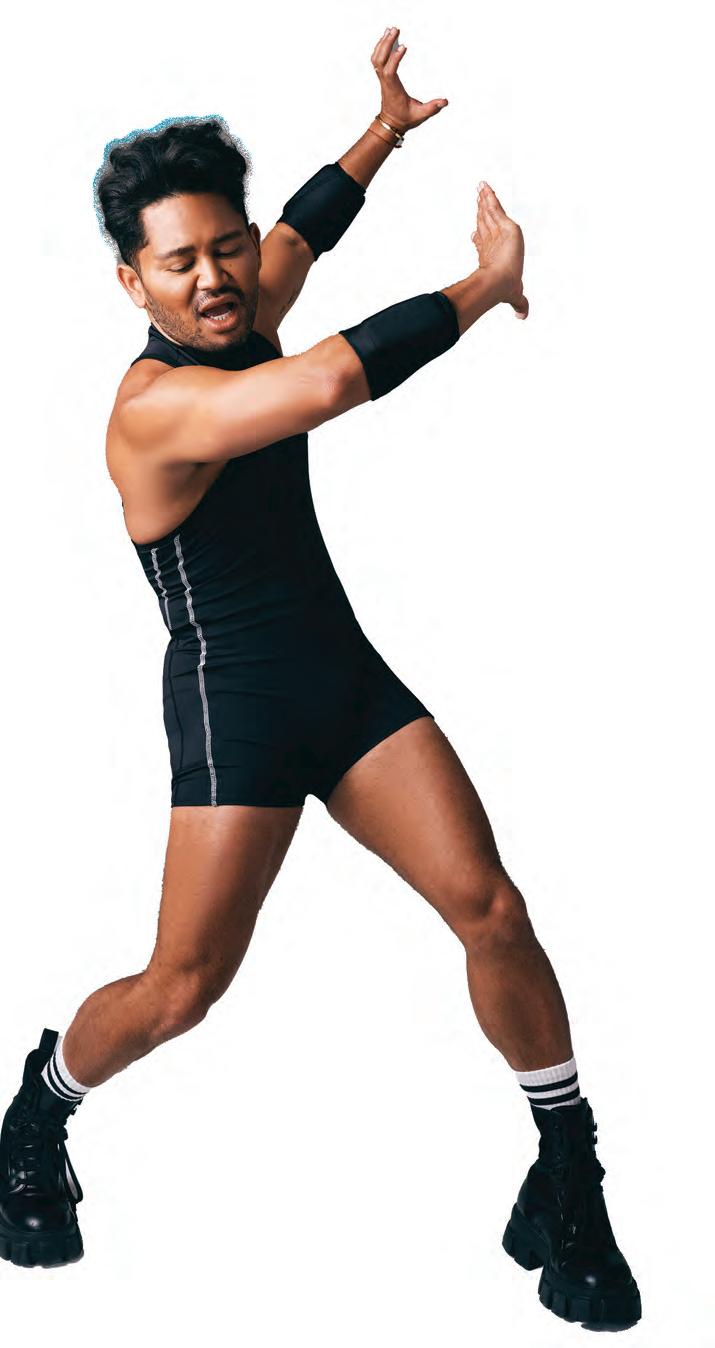
You were born Isaac Calpito in Hawaii but changed your name to Isaac Boots. Do you have a massive boot collection?
I have a trove. Call me the Imelda Marcos of boots. A pair of Prada chunky boots are my go-to. They give me extra height, so I don’t look like a lilliputian next to my husband. My first pair were patent leather Doc Martens. I was trying to be like Madonna in the “Human
You and Madonna have a few things in common…
Madonna was my biggest inspiration for obvious reasons, like going to a Catholic school and feeling like an outsider in my own home. She was speaking to everything I was feeling: moving to New York [as a teen] with nothing and pursuing a dream; following a passion and being deeply ambitious; and believing in yourself no matter what anyone thinks. When people try and destroy you in any way, you resurrect and keep on slaying it.
Both your father and grandfather were boxers named Isaac. Were you expected to follow in their footsteps?
I was forced to box when I was young. I was very effeminate, doing paddle-turns to Madonna’s “Cherish” on the beach. I was devastated every time they forced me to box. But looking back, I am grateful because I know how to protect myself. You have to do things that make you uncomfortable, so you’re equipped with tools to survive. Moving to New York when I was 17 with no safety net, I realized I could handle myself. Whenever there are things I don’t want to do or I’m tired and fearful, I go back to those moments and I dive in and do it.
During lockdown you did online workouts to raise over $1 million for No Kid Hungry. Did growing up on food stamps inspire you to give back?
Absolutely. My first thought in March 2020 was: what if this happened in 1986? What would my family have done? It frightened me. Schools were being shut down and so many children in America rely on school lunch as their meal
of the day. I wanted to raise a few thousand dollars. And it just hit. With the help of my celebrity clients posting about it, it just amplified the audience. I think it’s a sin that poverty even exists.
Tell me about married life!
It’s an adventure. My husband and I have been traveling so much with my work. I experience things I never imagined I would be able to do with someone that I love, but also with someone that sees life with me as a priority. When we first started dating, I was not wanting to delve into a relationship. I have a very tight group of girlfriends I call my “squirrels.” They all fell in love with him instantly and they fall in love with no one.
What inspired Torch’d?
I was a dancer on Broadway. I was doing eight shows a week for 12 years. The workout was out of necessity because I was in West Side Story and it was such a challenging show, not only physically, but the rehearsal hours. I didn’t have time to go to the gym. I started doing the workout on the Palace Theatre stage with Madonna playing on my boom box. Slowly but surely the rest of the cast started joining in—all the Sharks and the Jets and Bernardo and Maria. And I’m barking out orders. It has been an organic evolution. I started choreographing and working with pop stars and I would start rehearsal with this workout. Whenever I do Torch’d, it hearkens back to my days dancing on Broadway.
Torch’d now has energy patches, CBD gummies, and clothing. How did that happen?
I created a lot of the products because I travel so much. I didn’t want to rely on artificial stimulation. I don’t need a fourth cup of coffee or Diet Coke. I work with a lot of people on the fashion circuit doing all the shows. I have my girls popping their gummies or putting their Torch’d patch on. No jet lag, darling!
Your life is like a pop star on tour. I just finished my LA residency and I’m heading to Boston then Italy. Then I’ll be back to start my Hamptons life. I love the travel. I feel lucky that I’m able to be in all these beautiful places in season. I pretend I’m Madonna in “Truth or Dare.”
“
NORTON
, BUT LITTLE LAMONT DELIVERS ONE OF THOSE UNCANNY PERFORMANCES THAT DOESN’T SEEM LIKE ACTING.“
“AN INTIMATE
, AN AFFECTING PORTRAIT OF PARENTAL DEVOTION.“

COHEN MEDIA GROUP PRESENTS A FILM BY UBERTO PASOLINI
JAMES NORTON


